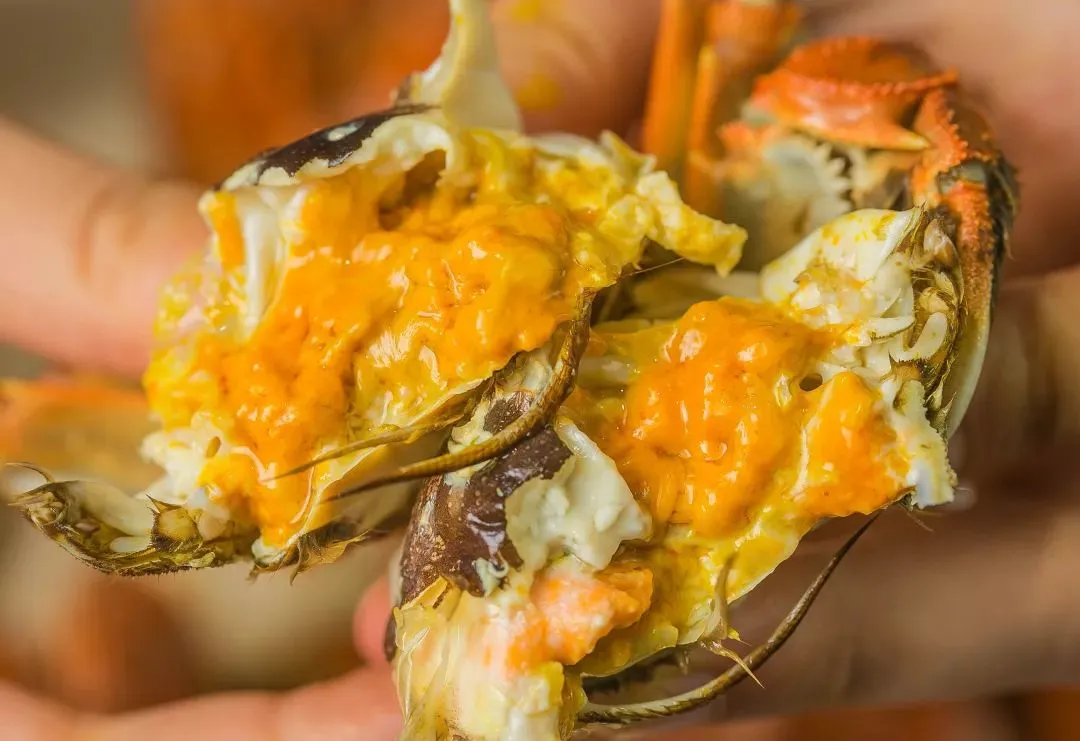Xinghualou Mooncake
Xinghualou’s Cantonese-style mooncakes were a must-eat delicacy for every household during the Mid-Autumn Festival.
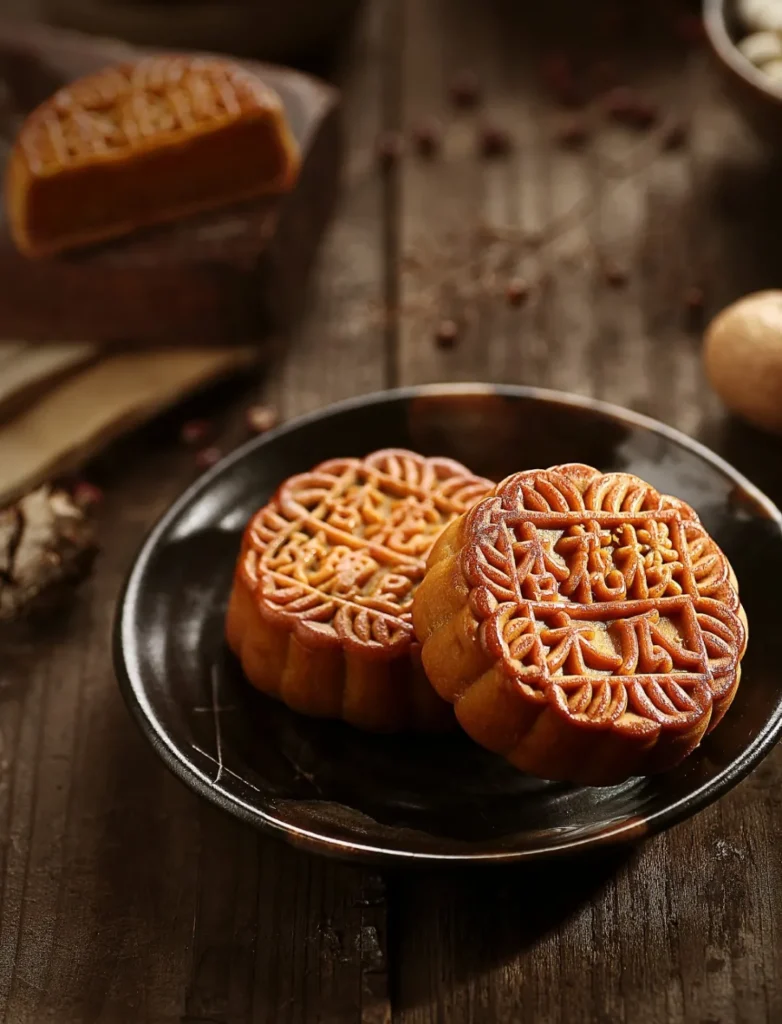
Every year on August 15th, there is a long queue in front of Xinghualou. Many uncles and aunts will queue for three or four hours without getting tired. This shows how delicious the mooncakes of Xinghualou are.
Rose bean paste, coconut paste, lotus paste, and five kernels are soft, smooth, sweet and delicious, and are all treasures in the hearts of aunts and uncles.
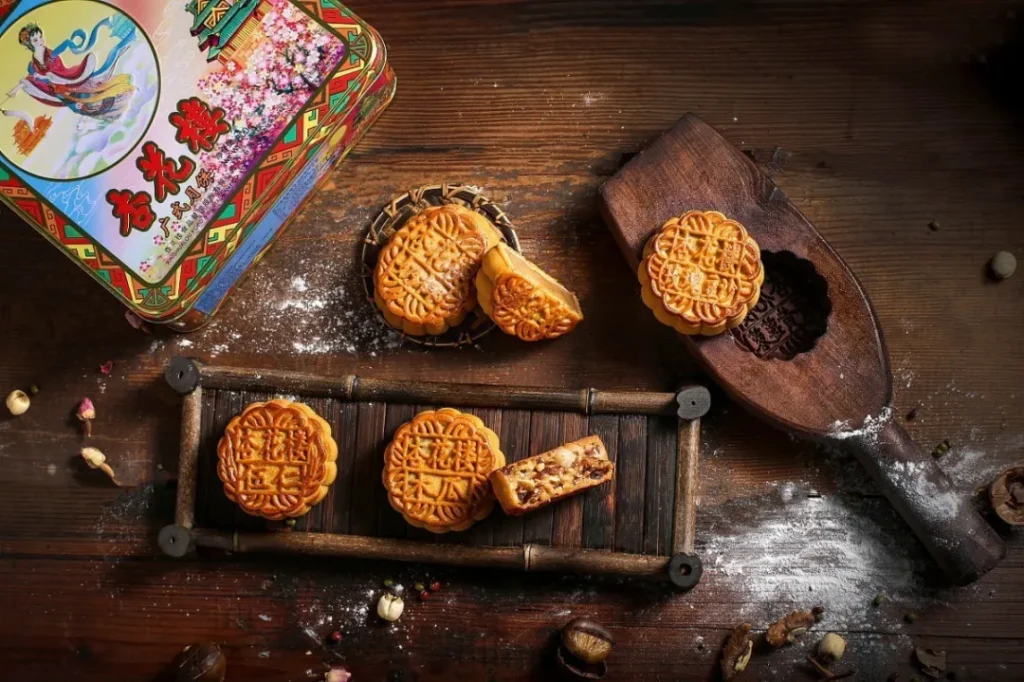
The “Chang’e Flying to the Moon” pattern on the mooncake packaging has become the collective memory of several generations.
Shao Wansheng’s Drunk Products
In Shanghai, there is probably no other restaurant other than Shao Wansheng that can boast that its fermented rice wine is the best.
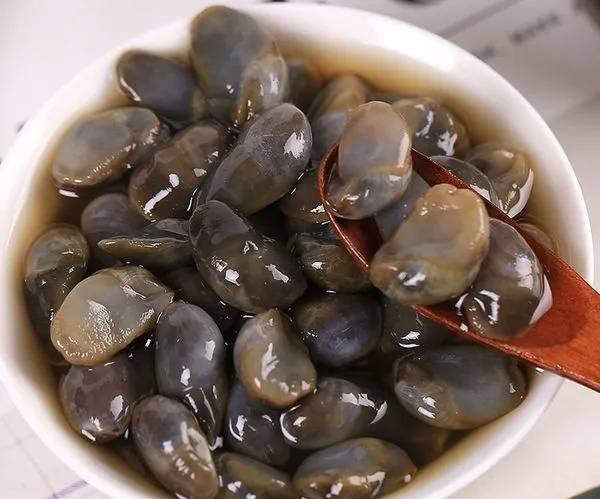
Shao Wansheng’s wine-drunk production process began in the Qing Dynasty. Drunken crabs, drunken chicken, drunken herring, and especially the signature “drunk yellow mud snails” taste mild, sweet, and leave a lingering fragrance.
There is an old saying: “In spring, eat silver clams, and in summer, eat mud snails.” In summer, the wine counter at the door of Shao Wansheng is crowded with people, most of whom come for the “drunk yellow mud snails”!
Lao Zhengxing local cuisine
“For authentic Shanghainese cuisine, Lao Zhengxing is the first choice,” this sentence reveals the status of Lao Zhengxing in local restaurants.
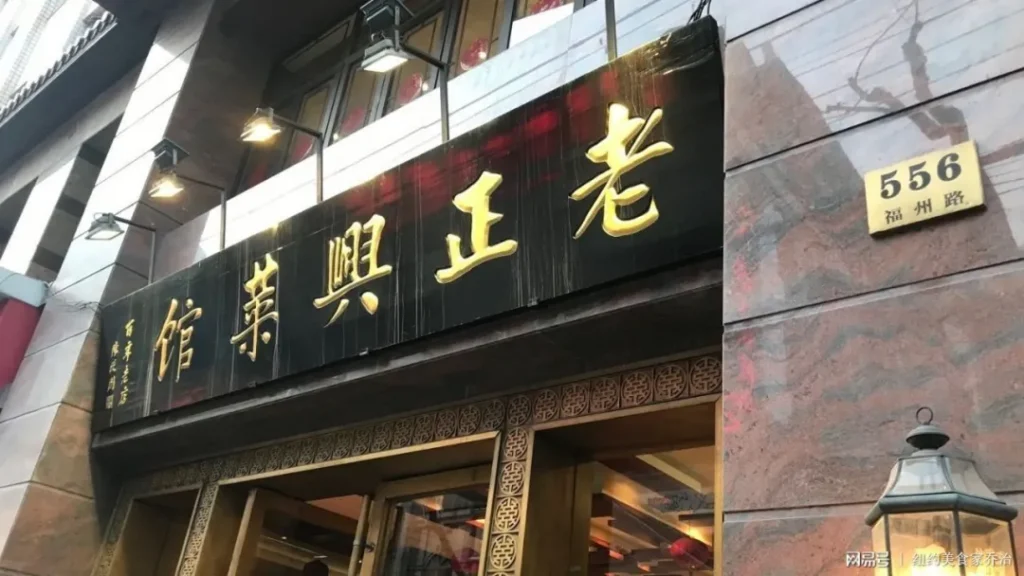
Lao Zhengxing not only has delicious dishes, but also has won many honors. Its “Fried River Prawns” once won the National Gold Medal, and its Eight Treasures Whole Duck, Black Sea Cucumber with Shrimp Roe, Zhengxing Crispy Eel, and Sauce Recipe won the Gold Medal at the First Catering Expo in 2004. After being tested by the taste buds of several generations, Lao Zhengxing is an excellent choice for authentic local cuisine.
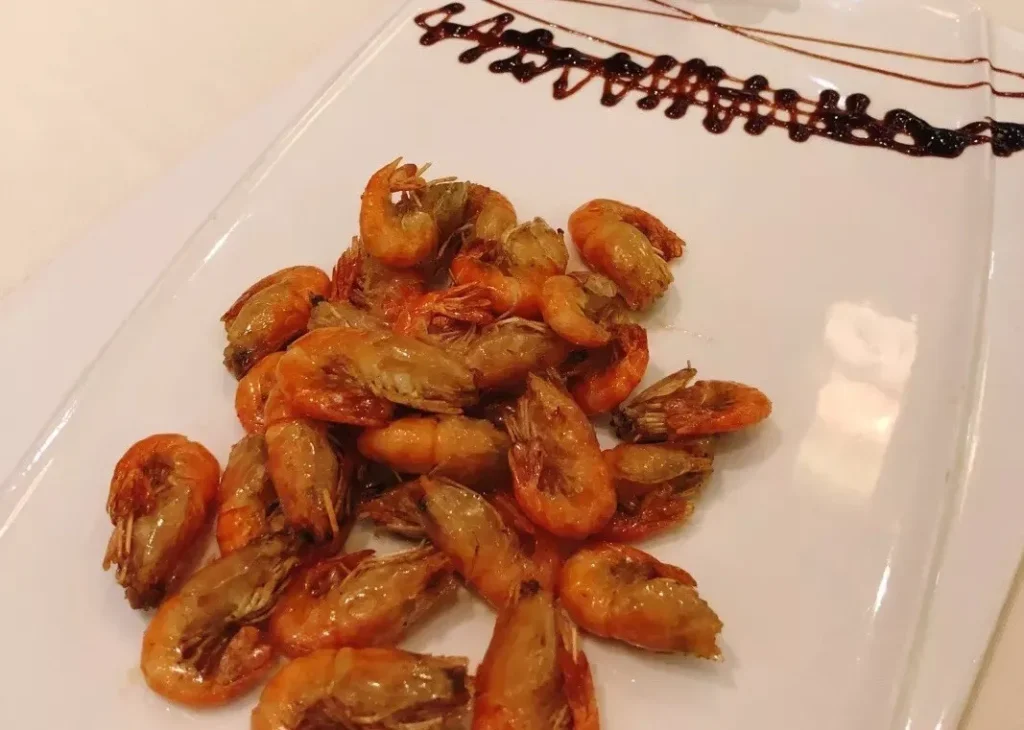
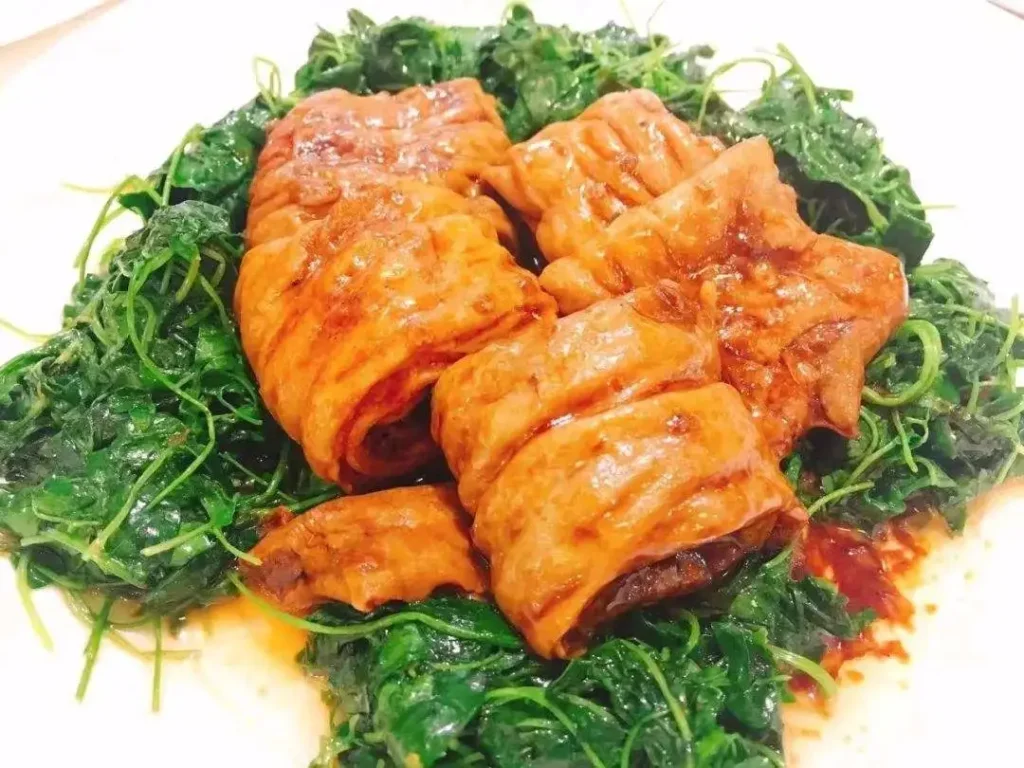
In spring, there are bamboo shoots and pond carp; in summer, there are fried whitebait with eggs and fried shrimp; in autumn, there are hairy crabs; in winter, there are chin paddling in the water, so delicious!
Dexing Restaurant Local Cuisine
Among the famous Shanghai local cuisine restaurants, Dexing Restaurant has to be one of them. Built in 1878, Dexing Restaurant is known as the “birthplace of Shanghai local cuisine”. It is not only famous, but also delicious. Mei Lanfang and Du Yuesheng both loved the local cuisine here.
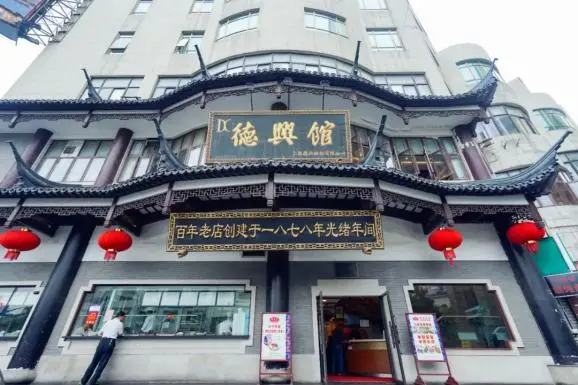
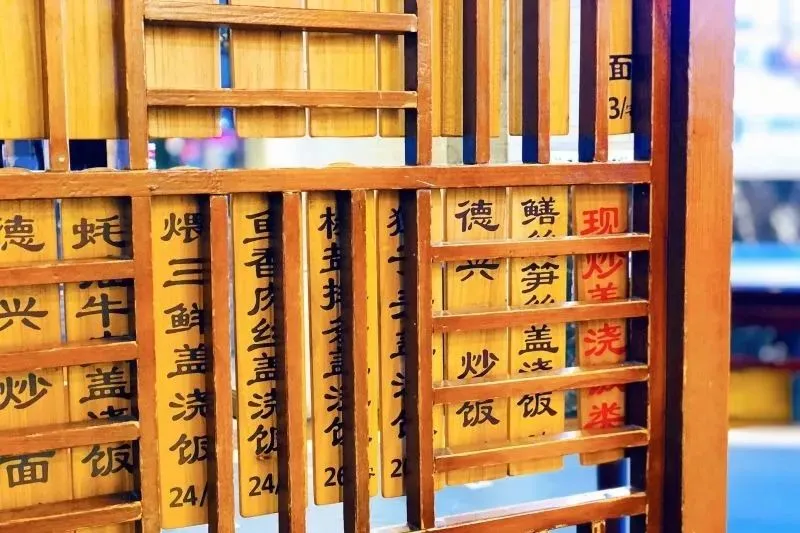
The black sea cucumber with shrimp and roe at Dexing Restaurant is known as the “best sea cucumber in the world”; the fried black sea cucumber is fat but not greasy, with a strong aroma, and the black fish lung meat is extremely tender and is very popular.
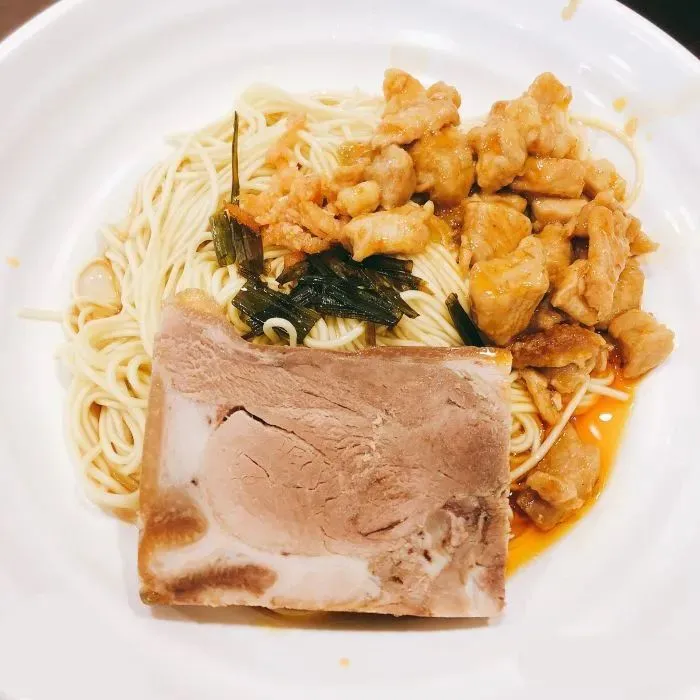
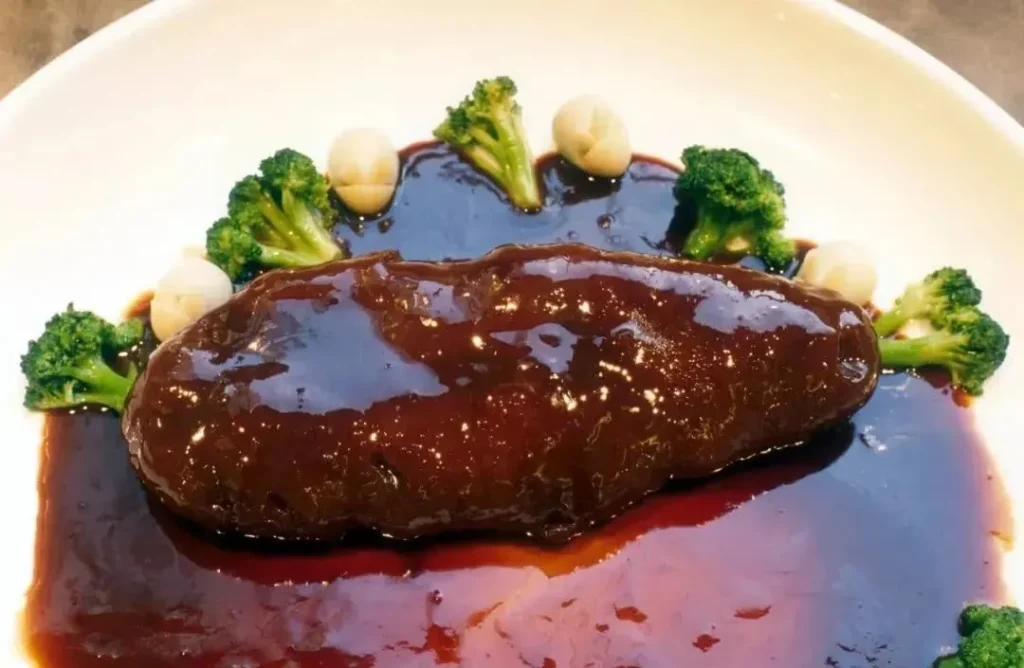
Especially the sold-out braised pig’s trotter noodles, with the tender braised meat and the thick and tasty broth, it is not an exaggeration to call it “Shanghai’s best noodle”.
Old restaurant local cuisine
The Shanghai Old Restaurant was founded in the first year of the Guangxu period of the Qing Dynasty and is very famous in Shanghai.
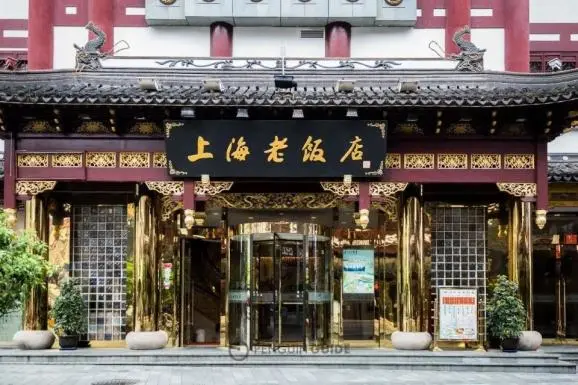
The restaurant is located in Chenghuang Temple. The local cuisine of the old restaurant absorbs the characteristics of Jiangsu, Zhejiang and Anhui regions into Shanghai local flavor dishes. Eight-treasure duck, fried river shrimp, fermented pork with fermented sauce, and blue fish lung, each dish has authentic local flavor.
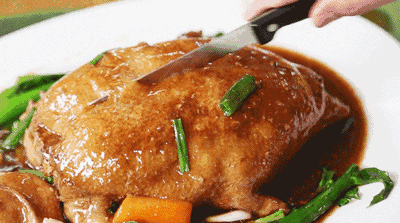
Nowadays, most of the people who eat at the old restaurant are tourists.
Sanlin local cuisine
From the buffets at wedding shops in the countryside to the appearance on A Bite of China, this five-generation culinary family, Du Yuesheng’s private chef, has become a classic Shanghainese cuisine, a must-have for family banquets during festivals and holidays!
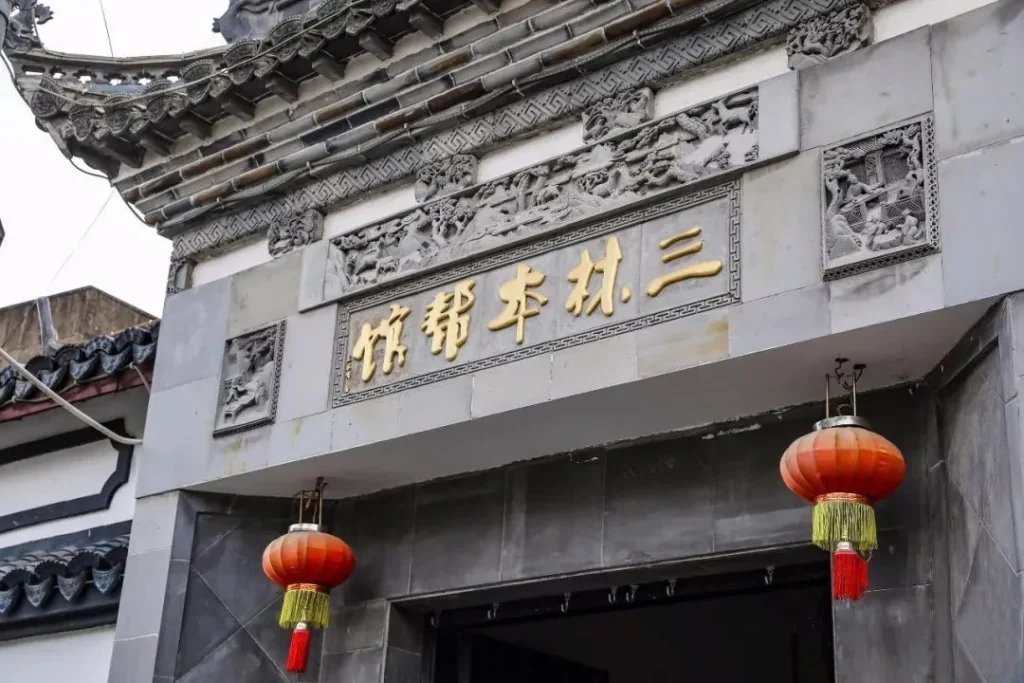
The quaint storefront, the traditional round table and benches, plus the rich and spicy local dishes that old Shanghainese love, the New Year’s Eve dinner reservations here are always very popular.
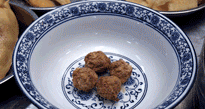
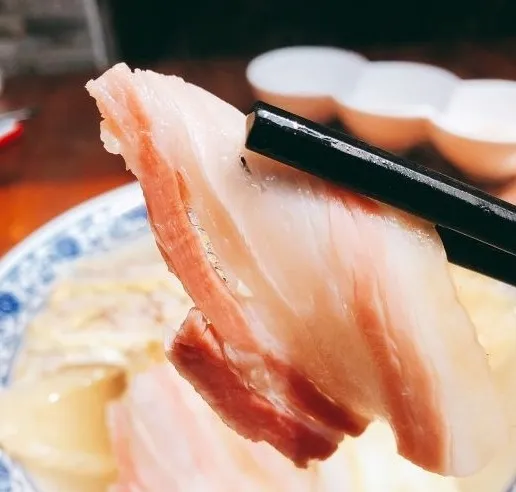
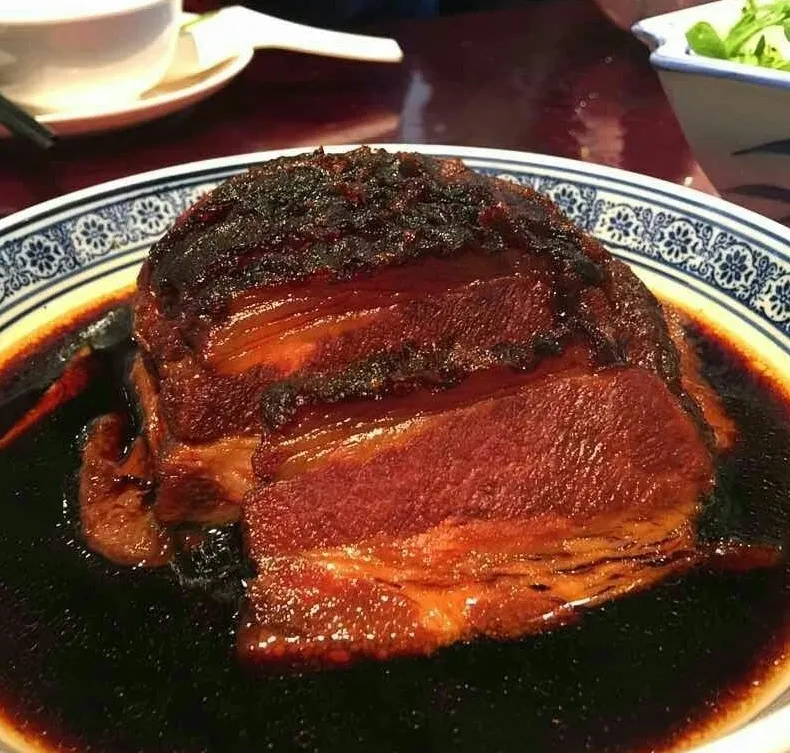

Braised pork with braised pork, steamed three delicacies, braised bream, shallot pork skin, salted pork and bamboo shoots, braised egg rolls, braised chicken, braised three shredded vegetables, these are the most famous “old eight” of Sanlin local cuisine, you will never get tired of eating them!!
Sanlin Pickles
Sanlintang has three treasures, one of which is Sanlin pickles. There are several shops selling pickles on Sanlintang Old Street, and many people come from other areas to buy them. Mixed vegetables, Xiaoshan radish, ginger slices… are delicious and not expensive! It is a must-try when you eat rice with soaked rice.

Sanlintang pickles have a long history of production, among which the small pickled cucumbers are said to have been tribute to the imperial court during the Ming Dynasty. They are very thin and long, tender and sweet, with a strong sauce flavor and a fresh taste.
Gong De Lin Vegetarian
Gongdelin is considered the “big brother” in the Shanghai vegetarian food industry. It has authentic flavors, healthy ingredients, and a 97-year history passed down from generation to generation. It is the first restaurant that Shanghai people think of when buying vegetarian cooked food.
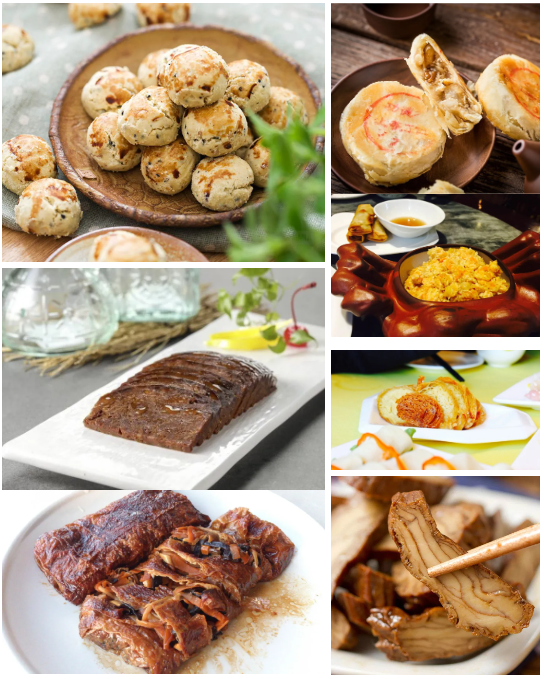
The vegetarian duck at Gongdelin is extremely delicious. The tofu skin is very thin and has a bit of juice which goes well with rice. The roasted gluten and tofu sauce are very flavorful. No wonder Soong Ching Ling and George Bernard Shaw praised it after having eaten it!
Wang Baohe Crab Feast
When the autumn wind blows, crabs start to itch, and hairy crabs are always on the Shanghainese table. Wang Baohe’s hairy crabs come from Yangcheng Lake and other places and are of excellent quality.
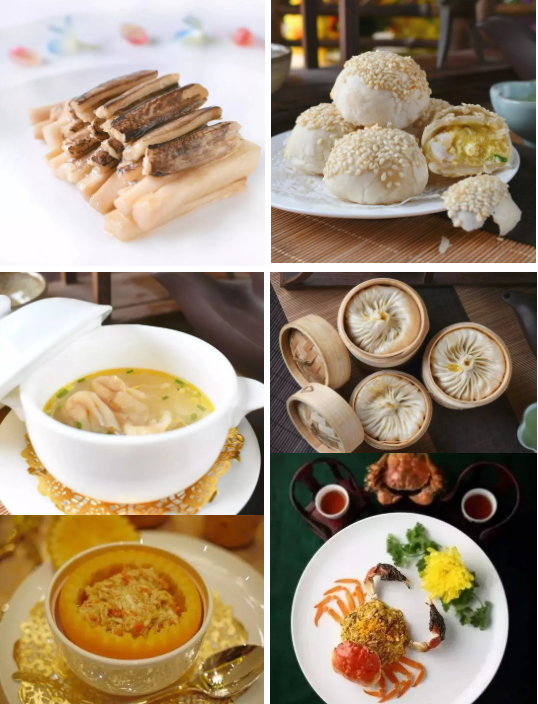
The crab feast launched by Wang Baohe Restaurant in 1979 caused a national sensation. In 2013, “Wang Baohe Crab Feast Cooking Skills” was rated as Shanghai’s Intangible Cultural Heritage. Dozens of crab dishes are inseparable from the word crab, and even the dim sum are no exception.
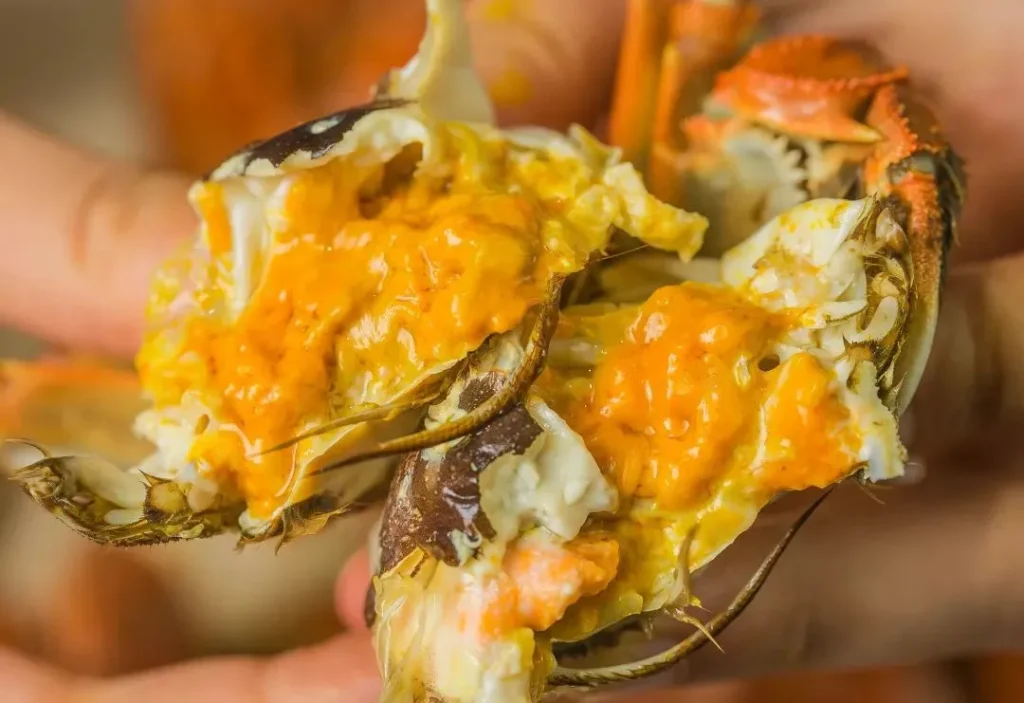
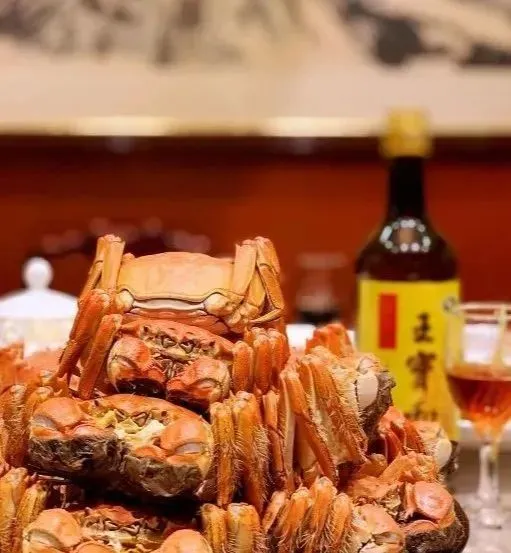
These crab dishes perfectly present every part of the hairy crab.
Takahashi Pancakes
Gaoqiao Town in Pudong has a long tradition of making pastries, and is especially famous for its pancakes. Gaoqiao pancakes originated during the reign of Emperor Guangxu, when a wealthy family surnamed Zhao in the town fell into poverty. Zhao’s wife made homemade pancakes and sold them in baskets at teahouses and tobacco shops. The pancakes were small, delicious, loose and crispy, which is what we now call “pancakes”.
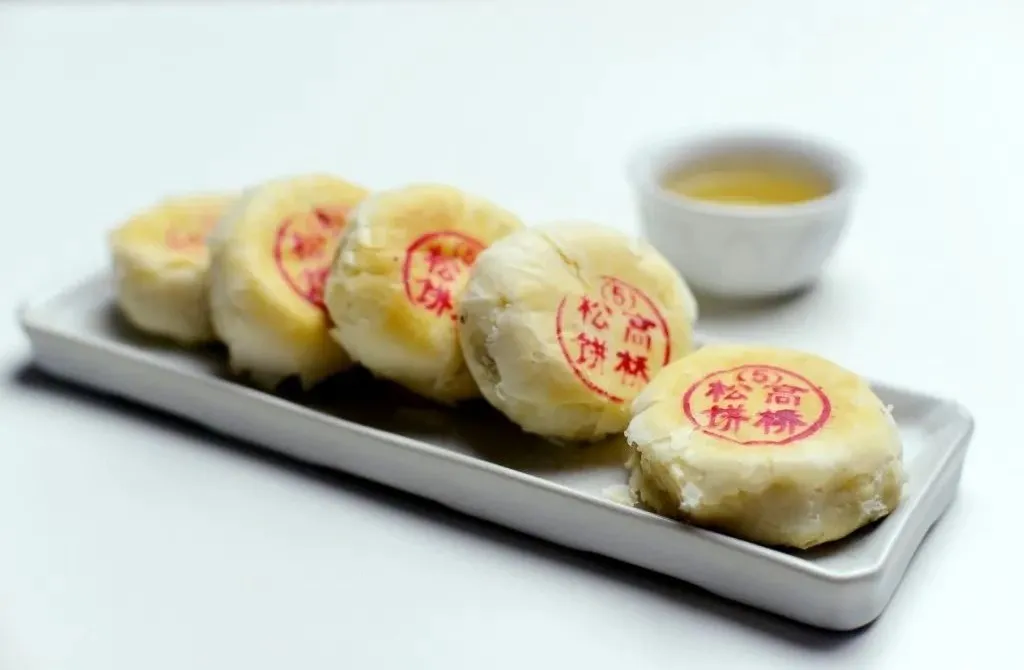
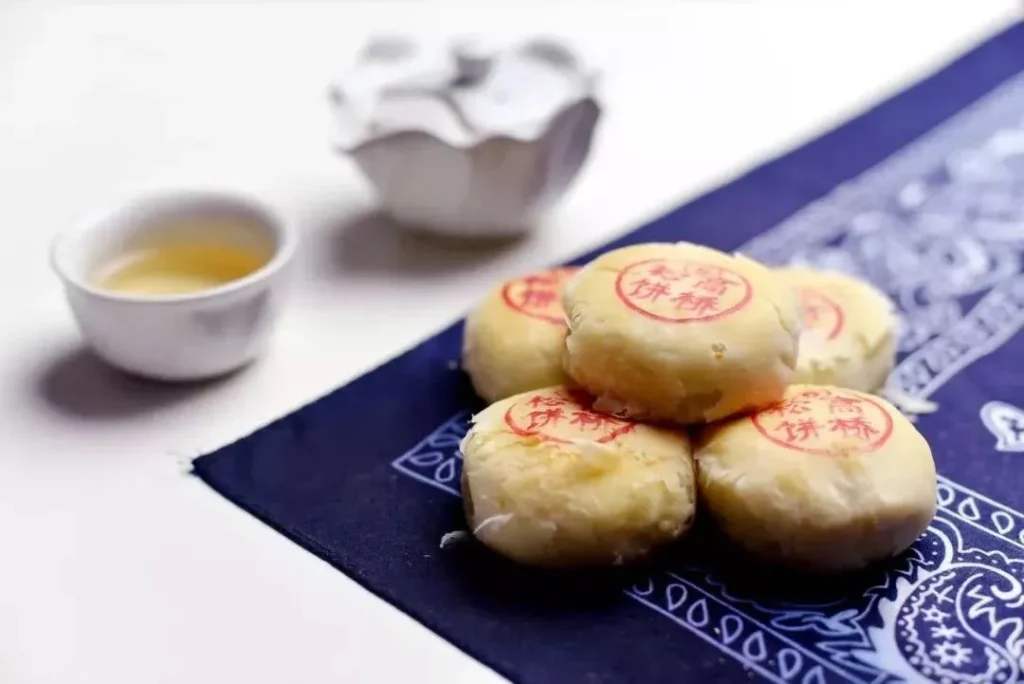
The Gaoqiao pancake has distinct layers of puff pastry, each layer is as thin as paper, and is also known as “thousand-layer pancake”.
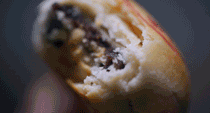
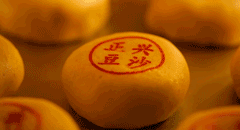
This is a local pastry passed down by Gaoqiao people for hundreds of years. The edges of the pastry are snow-white, and it is so crispy that it crumbles when you take a bite. It is also filled with red bean paste, walnuts, and red dates.
Gaoqiao pancakes are a must on wedding days, but if you want to eat them now, you can only make a long trip to Gaoqiao.
Nanhui Fenglu Peach
When Shanghai people eat peaches, the best choice must be Nanhui peaches, and the Nanhui Fenglu peaches are the best among all Nanhui peaches.
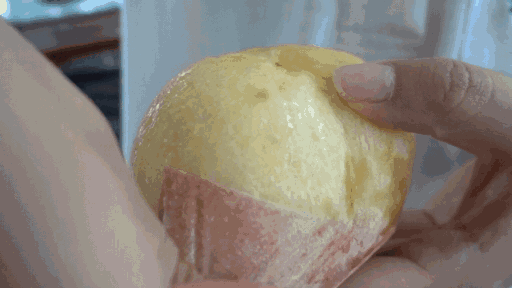
The fruit is round, flat at both ends, beautiful in color, white with a hint of red. It has a thin skin, lots of juice, sweet and fragrant. Eating one will make you feel light-headed.

In July and August, you can go to Nanhui to experience the fun of picking peaches yourself.
Shaoxing White-Cut Chicken
From a small chicken porridge stall to a time-honored brand famous both at home and abroad, Xiao Shaoxing White-Cut Chicken has captured the hearts of countless Shanghainese. Countless tourists come here every day just to have a taste of its delicious food.
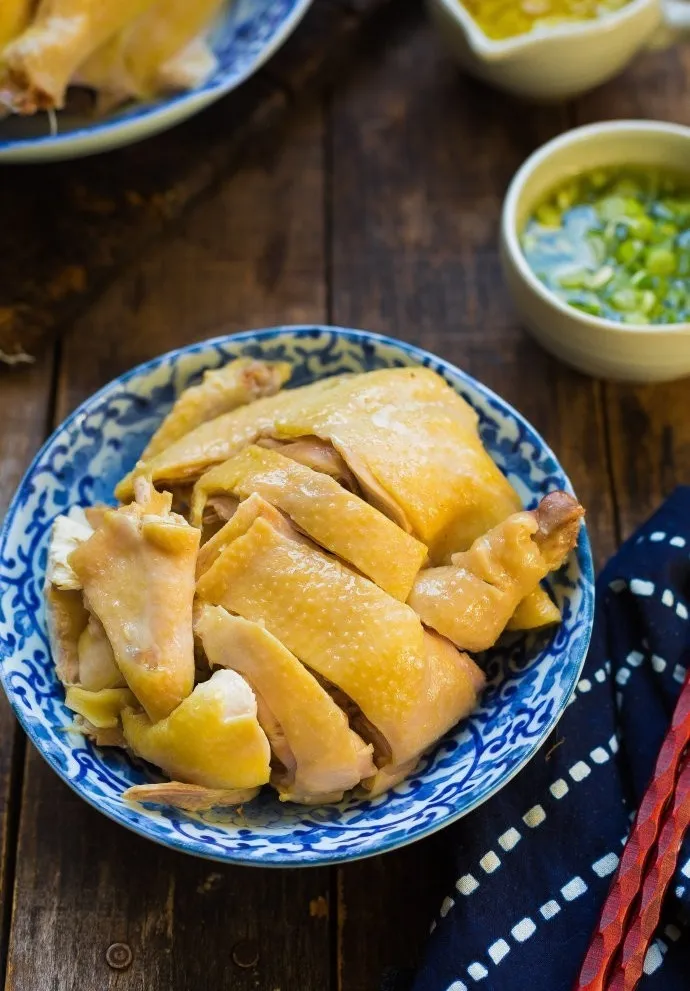
The white-cut chicken of Xiao Shaoxing is made from authentic chickens bred in Nanhui, with yellow skin, yellow feet and yellow beak. It is crisp, tender, fresh and delicious. According to incomplete statistics, more than 6,000,000 chickens are sold each year.
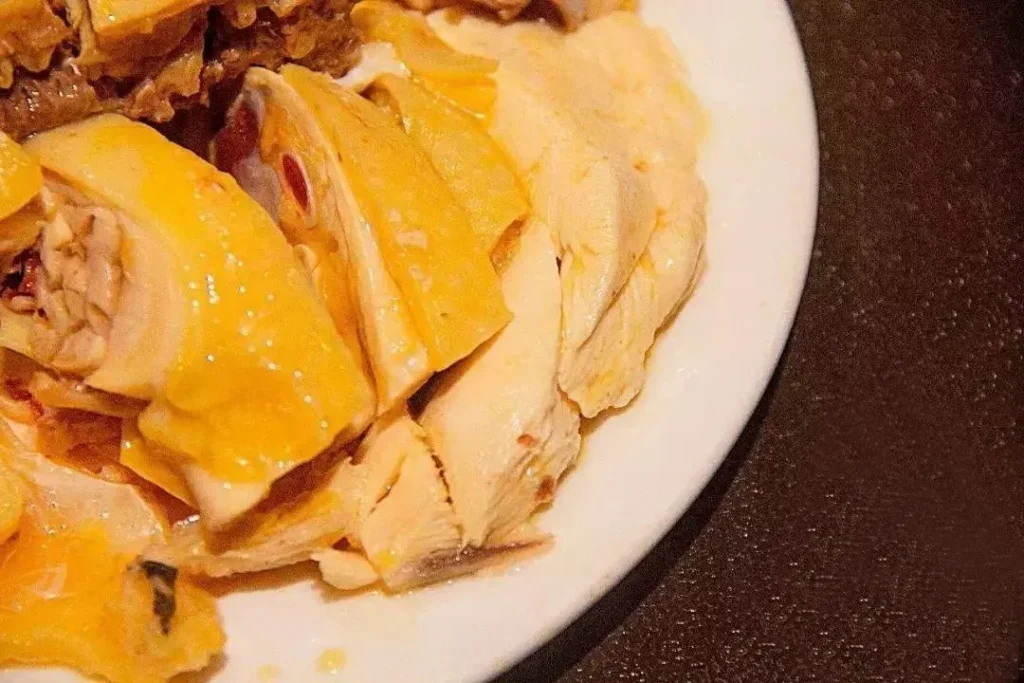
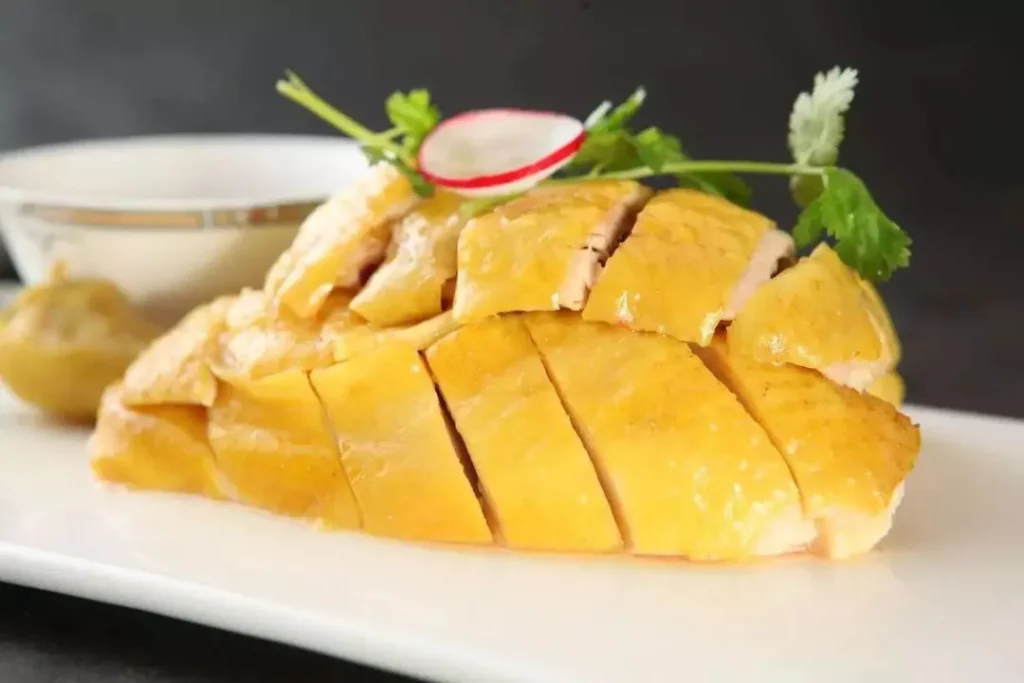
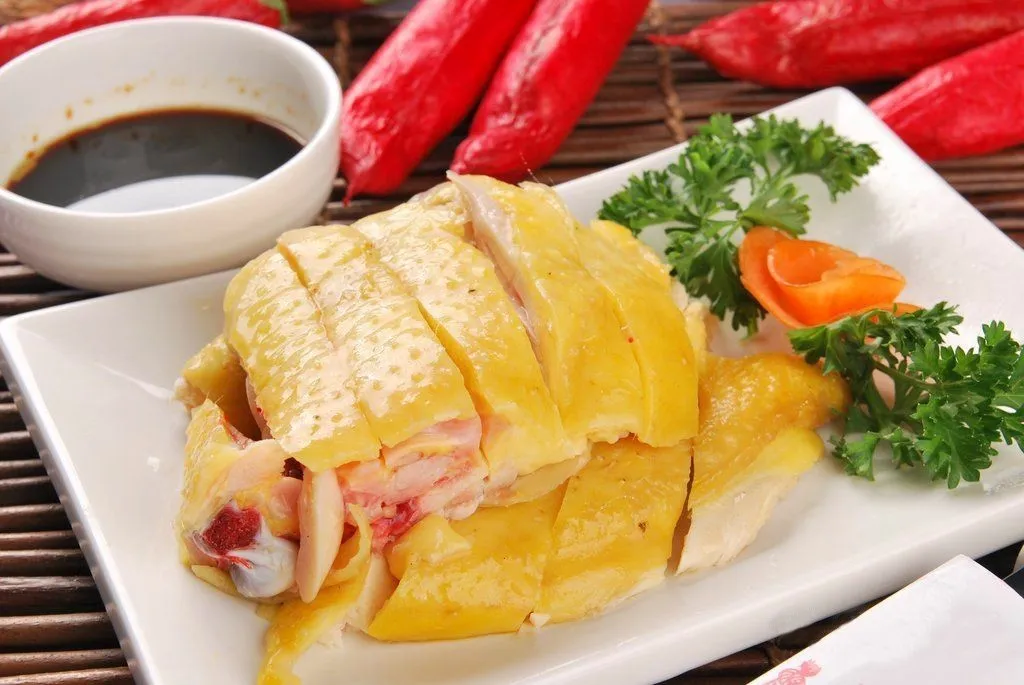
The Shaoxing white-cut chicken is plump and shiny. It is served with secret condiments, the meat is tender and the skin is crispy, and the marinade is delicious. However, the quality has declined again and again in recent years, and it may no longer be as glorious as it once was.
Dongtaixiang Fried Buns
Dongtaixiang has successfully applied for the “intangible cultural heritage” with its semi-fermentation technology and is the leader in the Shengjian industry.
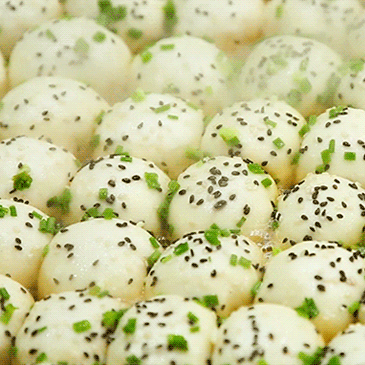
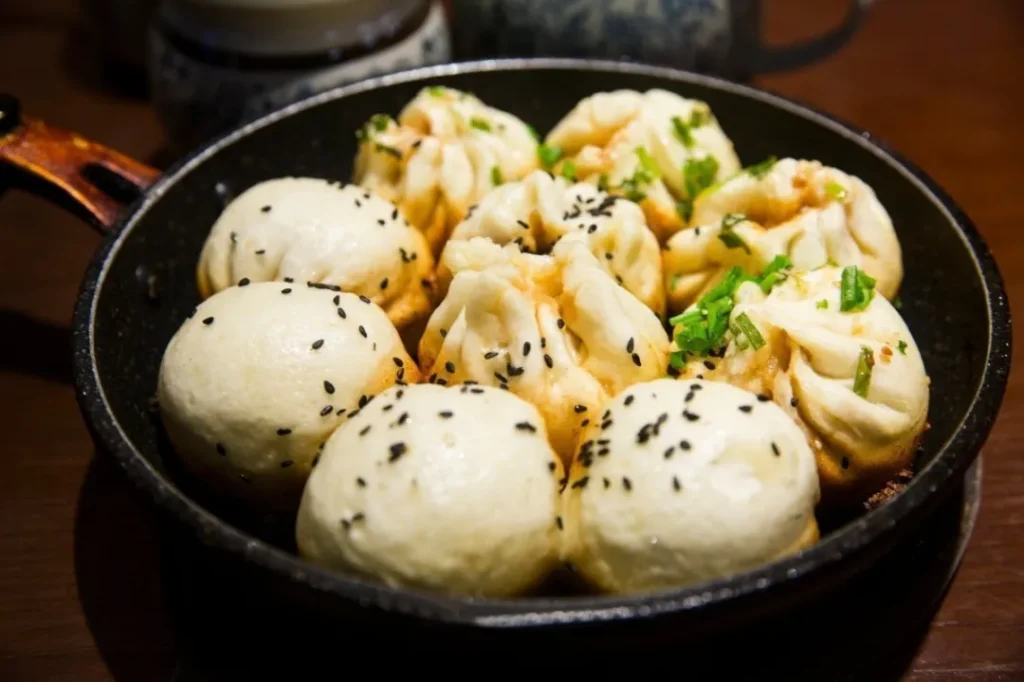
The semi-fermented dough is slightly soft and porous, with fried sesame seeds, a crispy base, and a thin skin. You can absorb the soup when you bite it, and the taste is amazing.
Spiced Beans
When I was a child, whenever I went to the City God Temple, besides walking across the Nine-Curve Bridge, I would eagerly look forward to my mother buying some broad beans for me!
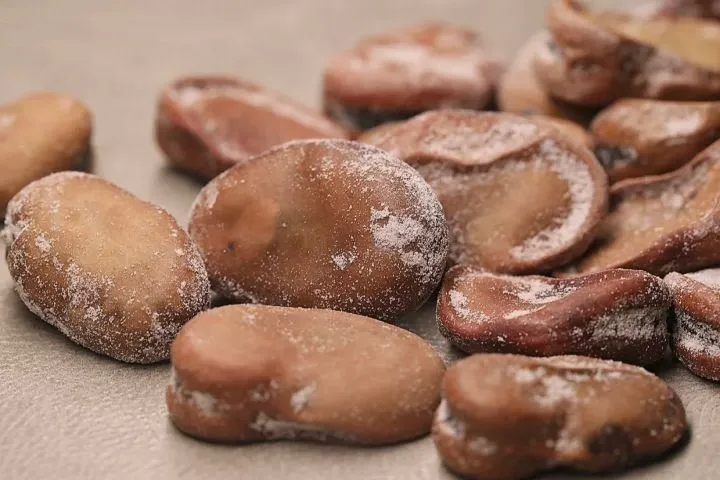
We use the “three white” broad beans produced in Jiading, add fennel, tangerine peel, cinnamon, sugar, essence and other ingredients to cook them, making the broad beans soft but hard, salty but sweet. These spiced beans with rich milky flavor are the memories of childhood.
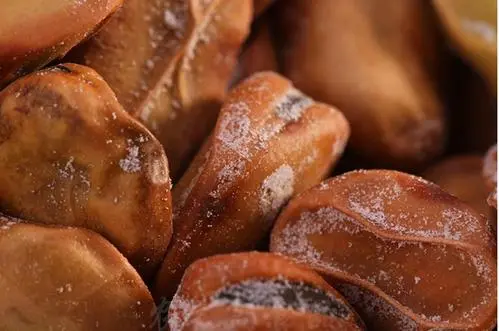
You can slowly lick the outermost layer of white frost. After licking it, the five-spice beans will have a salty flavor. The heart of the broad bean is a little soft and chewy, which is especially suitable for leisure time!
Pear paste candy
There is a folk song in Shanghai: “One pack of ice and snow to mix pear paste, two uses spices with strong medicinal flavor, three hawthorn malt can help digestion, four gentlemen can cure tuberculosis in children, schisandra and cinnamon are both used, six add ginseng and three cumica, seven stars have a strong charcoal fire in the stove, eight directions of wind are generated to fry the pear paste, nine makes rose with a strong fragrance, ten is a tonic with effective results.”
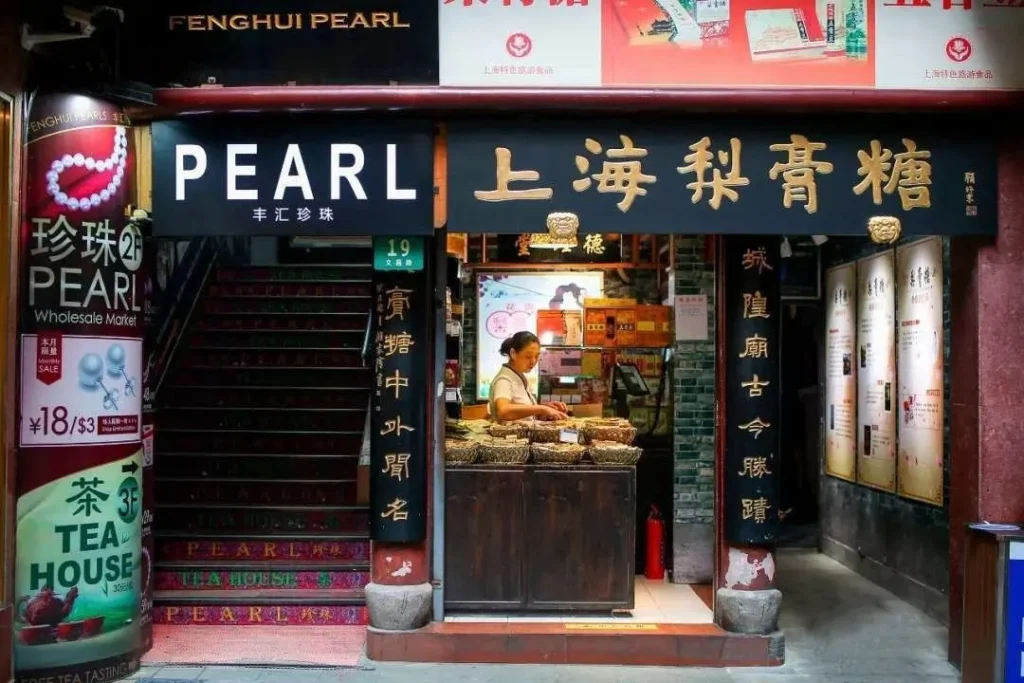
This folk song is about pear paste candy. Although its name is candy, it tastes bitter.
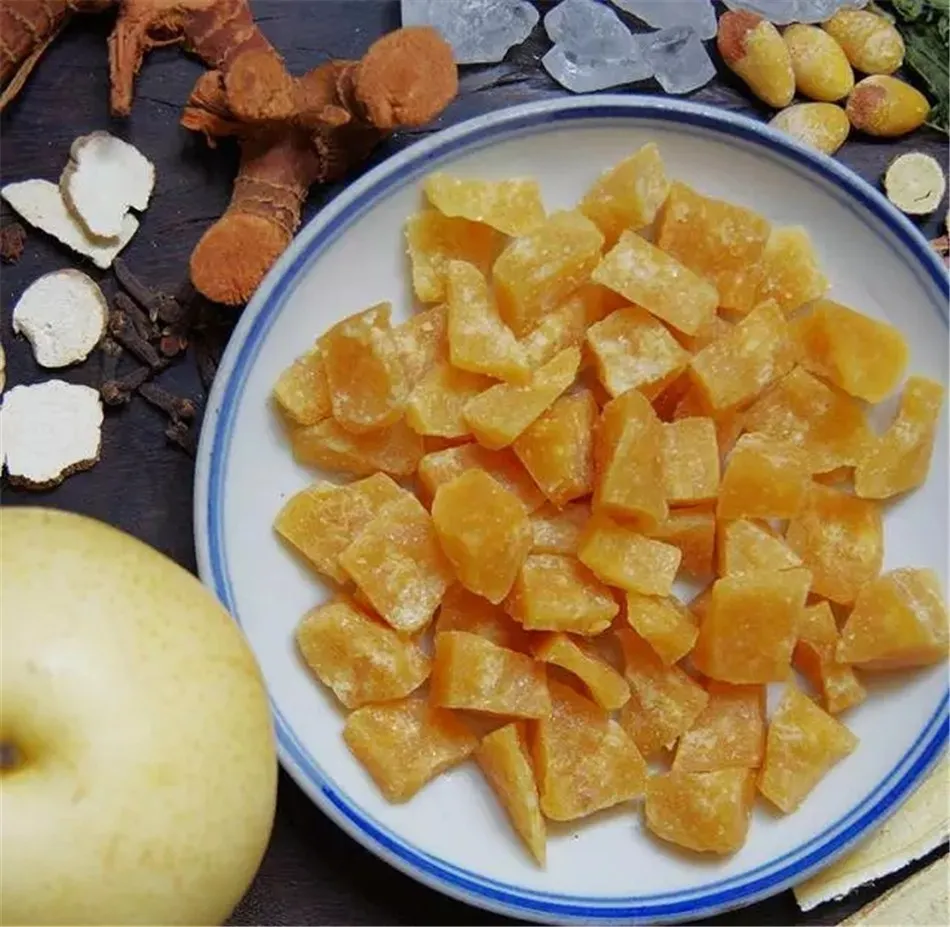
It is made of pure white sugar (without maltose, flavors, or pigments) and 14 kinds of domestically produced medicinal materials (ground into powder), including almonds, Sichuan fritillaria, pinellia tuber, and poria cocos, so it has medicinal value. It is sweet but not greasy, crispy and delicious, and you will feel refreshed all day after eating it!
Shen Dacheng Cake
Shen Dacheng, the “King of Cakes and Tuan” in Shanghai, is a time-honored brand in Shanghai and a well-known dim sum shop in the hearts of the older generation. It was founded in the sixth year of the Guangxu period of the Qing Dynasty (1875) and has a history of more than 140 years. Its head office is now located at No. 636 Nanjing East Road.
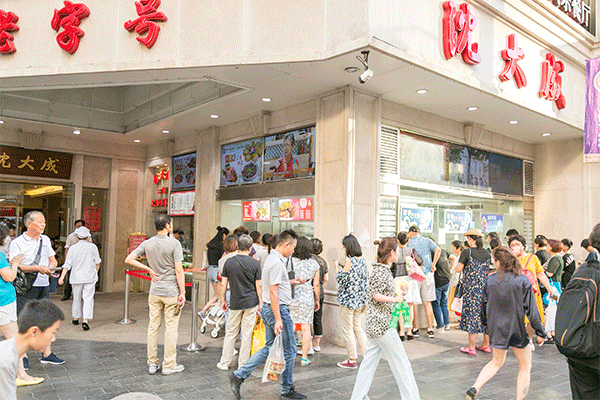
There are countless people queuing up every day, especially at the takeaway cake window, where there is often a long queue.
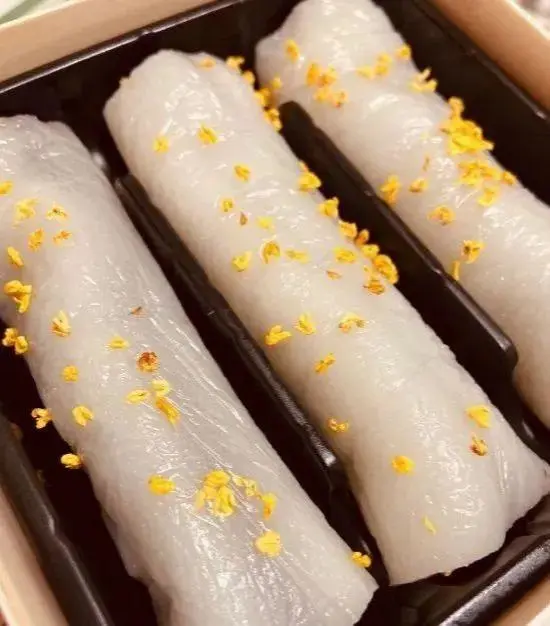
Shen Dacheng’s rice cakes are the most famous. They are sweet and sticky, and every bite gives you a strong sense of satisfaction! They are suitable for breakfast or afternoon tea, and more than 10,000 rice cakes are sold every day.
Sanyang Pastry
Sanyang was founded by people from Ningbo, and the things it sells are also based on Ningbo’s customs. The store has different pastries for each season – “spring pastries, summer cakes, autumn cakes, and winter candies.” Some varieties of seasonal pastries are only available for 5 or 6 days a year.
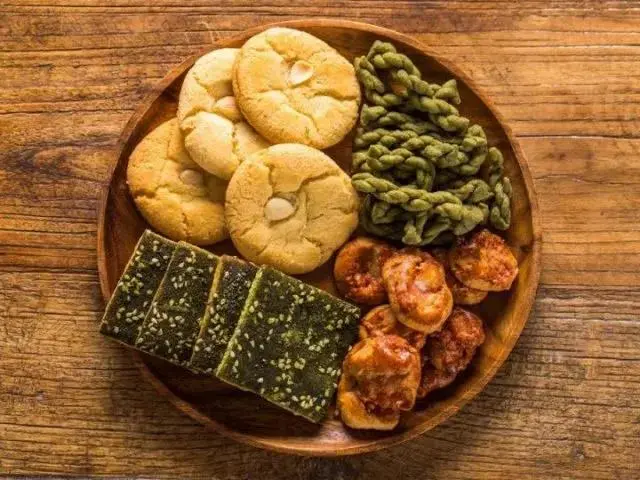
The specialty of the store includes water chestnut cake, lamb chop light milk cake (lamb chop milk cake), Ning-style tuckahoe cake, tangerine peel cake, pine nut cake, snow cake, and money cake. However, the most popular ones are moss cake, almond cake, oil cake, and chicken cake.
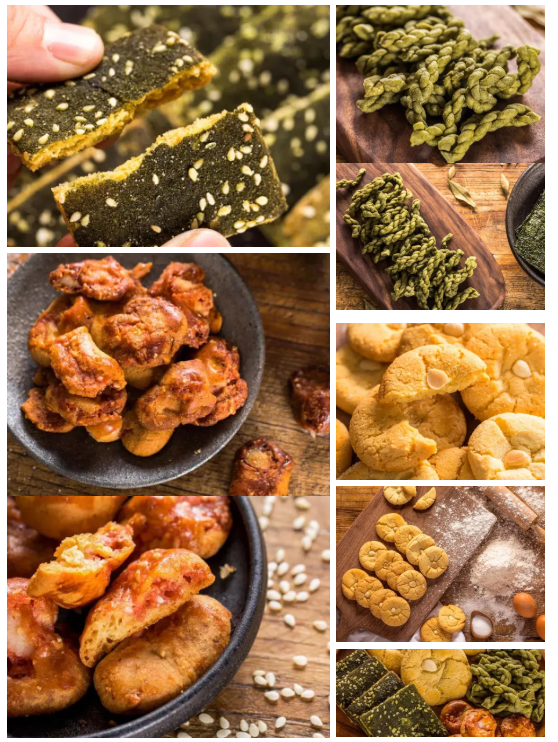
The recipe changes with the seasons, and the pastry recipe will vary according to different climates and temperatures, so as to always maintain the fragrant and crispy taste.
Daoxiangcun Poultry Products
Daoxiangcun can be said to be everywhere in the streets of Shanghai, and its stores can be seen in many places. The duck gizzards, pressed duck, air-fried goose and other poultry products in the store are excellent choices for New Year’s goods.
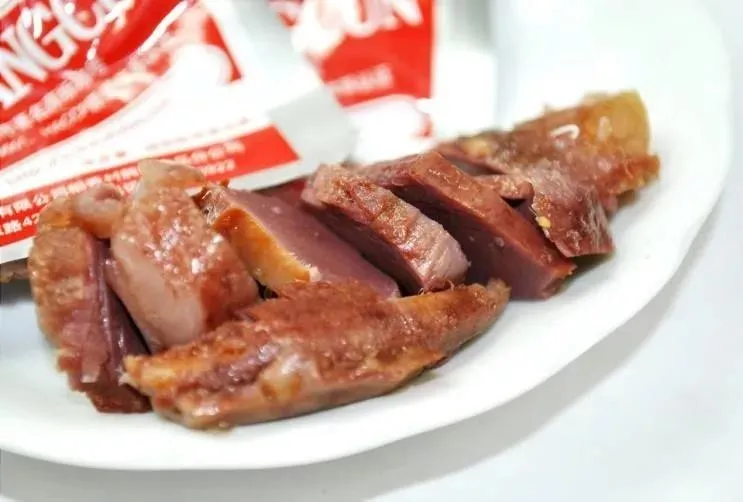
On weekdays, when you don’t want to cook, it’s a good side dish.
Dafugui Shanghai-style Anhui cuisine
Da Fugui is characterized by Huizhou architectural landscape and Shanghai-style Hui cuisine. The restaurant not only sells Fugui marinated duck and Huizhou smoked fish, but also Shanghai-style creative dishes such as Sanlintang pork skin with scallion oil and stir-fried eel paste. It even offers Shanghai-style creative fusion dishes such as dry-fried prawns with pasta, which cleverly combines tradition and innovation.
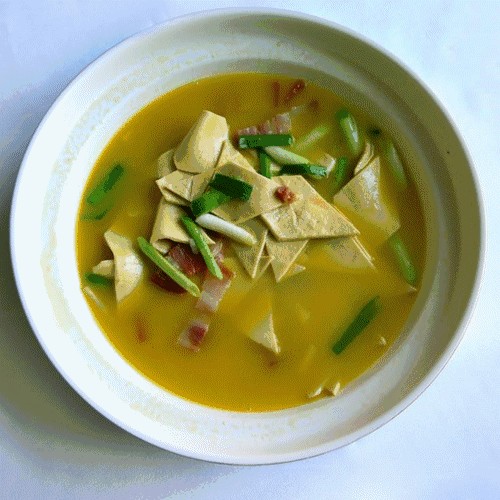
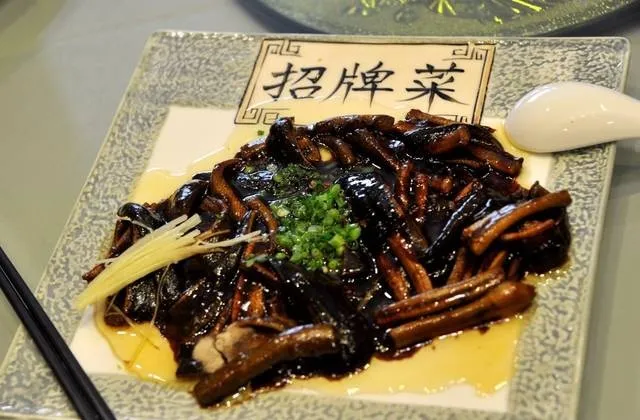
Dafugui sells more than 100 varieties of Anhui cuisine, including the main famous dishes such as “Golden and Silver Hoof Chicken”, “Jixi Stinky Mandarin Fish”, “Steamed Pork with Rice Flour”, “Knife-cut Fragrant”, “Dry Pot Stew”, “Steamed Mountain Bamboo Shoots”, and “Huizhou Eel Paste”.
Laotongsheng North and South Goods
Lao Tongsheng was founded in the 13th year of Emperor Guangxu’s reign in the Qing Dynasty. It is one of the most famous stores selling northern and southern goods in Shanghai! It has a history of more than 100 years in the business of selling northern and southern goods.

Its business scope is very wide. In addition to southern and northern goods, there are also seafood, fresh food, fruits, sugar, wine, and pickled products. Almost everything you want is available here.
International Hotel Beijing Dim Sum
When talking about the International Hotel, the first thing that comes to mind is definitely the butterfly cakes. However, this former “tallest building in the Far East” has more than just this one unique skill! What’s even more amazing is the “Beijing dim sum making skills” of the master chefs.
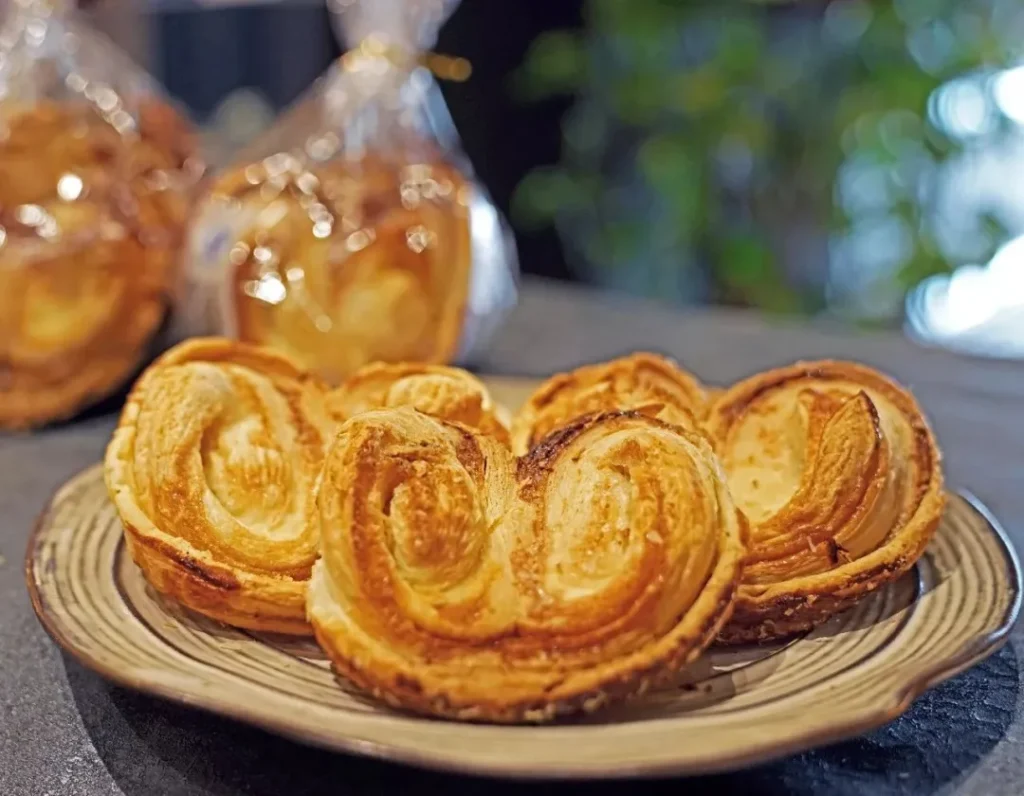
Beijing-style dim sum, also known as Beijing-style dim sum, includes silver thread rolls, small oil cakes, pan-fried cakes, four-happiness steamed dumplings and mian, each of which has a strong Beijing flavor.
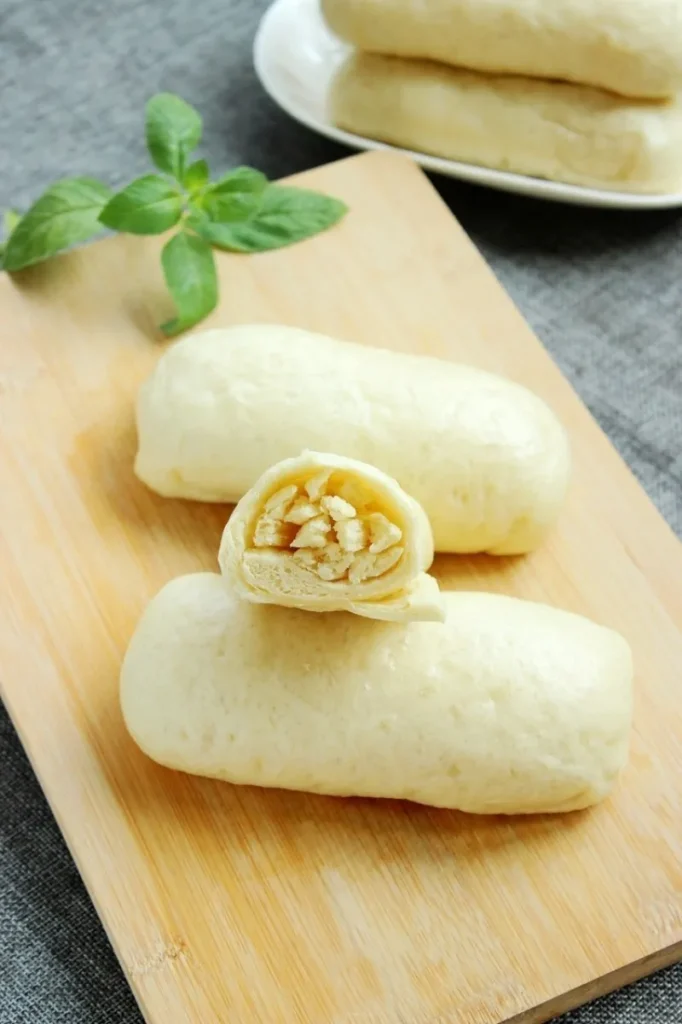
However, after it was introduced to Shanghai, it was modified to suit the tastes of Shanghai people.
Wang Jia Sha local dim sum
Wang Jia Sha is the number one in Shanghai dim sum. Old customers’ favorites are crab roe dumplings, crab roe glutinous rice balls, and the soft, glutinous and sweet eight-treasure rice pudding.

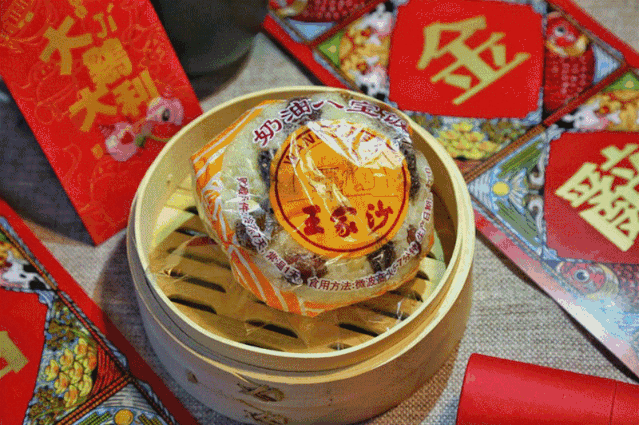
Shrimp wontons, crab roe pancakes, red bean paste crispy cakes, and two-sided yellow are jokingly called the “Four Famous Dan” of Wangjiasha.
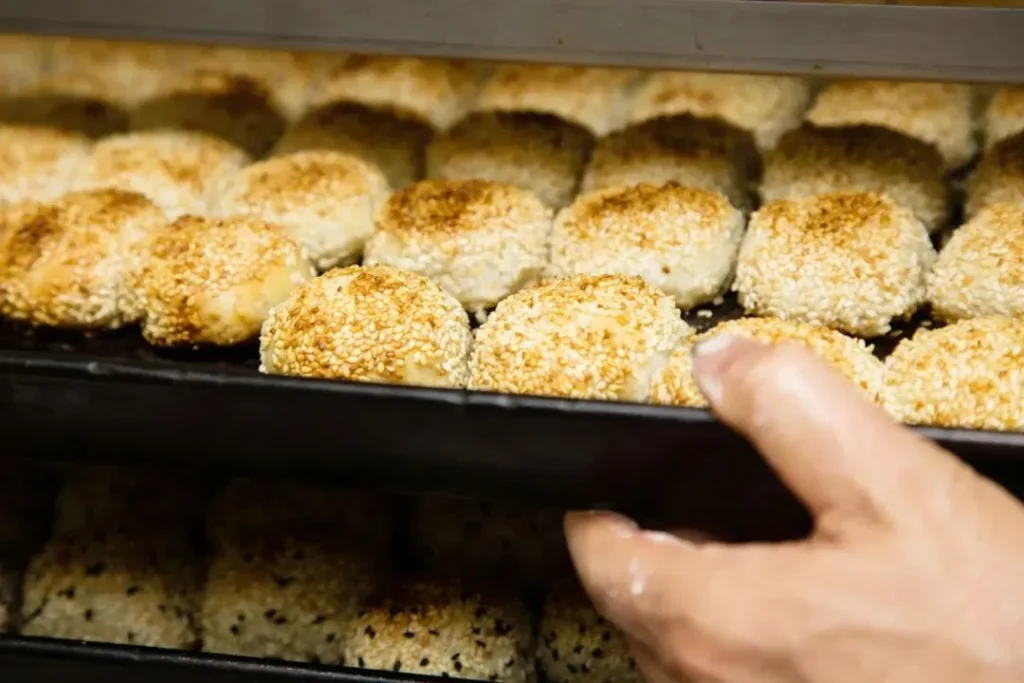
Moreover, Wang Jiasha has always insisted on hand-made production and freshly made sales, which has won the favor of many diners.
Kai Sling Cake
The memory of old Shanghainese must include a piece of Caesar cake.
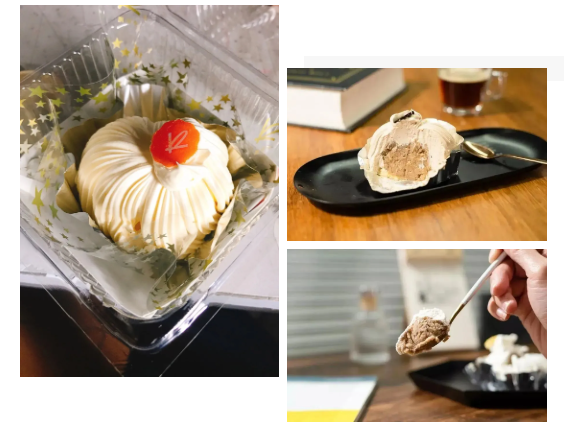
Flour, cream, chestnuts, icing. This chestnut cake, first created by Ka Sling, has a dense and smooth cream, and is even more solidly stuffed with crushed chestnuts from fresh seasonal chestnuts. Every detail is full of Shanghai’s temperament.
Chuen Yeung Restaurant
“Yangzhou is deep in the green willows” is the origin of the name of Lvyangcun Restaurant.
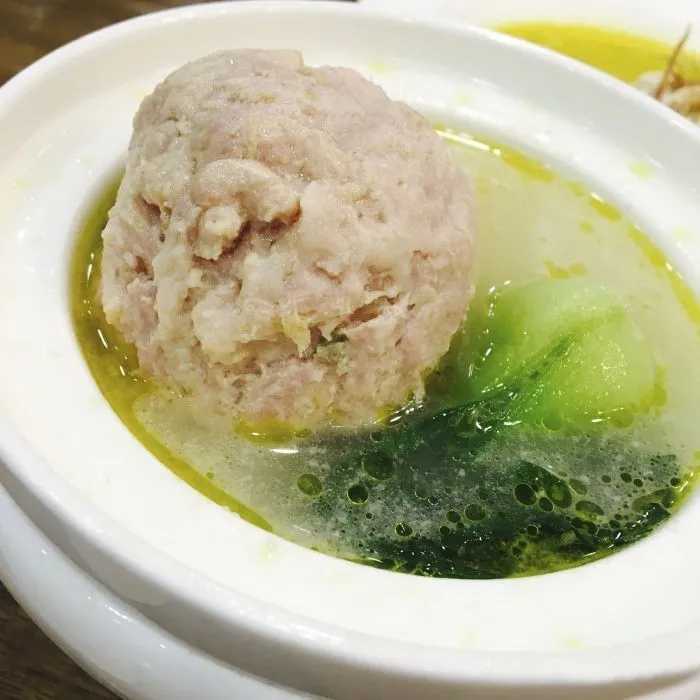
Yangzhou cuisine is the main dish of Green Yang Village. A dish of three-head crab meatballs with pork balls has attracted countless fans. It is a real treat to sip the soup and eat a bite of meatballs. Braised big fish head and braised pig head have attracted even more fans!
Lifeng Dried Meat Products
Shanghai Lifeng Food Co., Ltd., formerly the “Gongcheng Southern Goods Store” founded in 1938, produces and sells its own uniquely flavored beef jerky, pork jerky, sausages, meat dates, cured chicken, cured duck, as well as hanging oven roast duck, roast suckling pig, roast barbecued pork and other Cantonese-style cooked food.

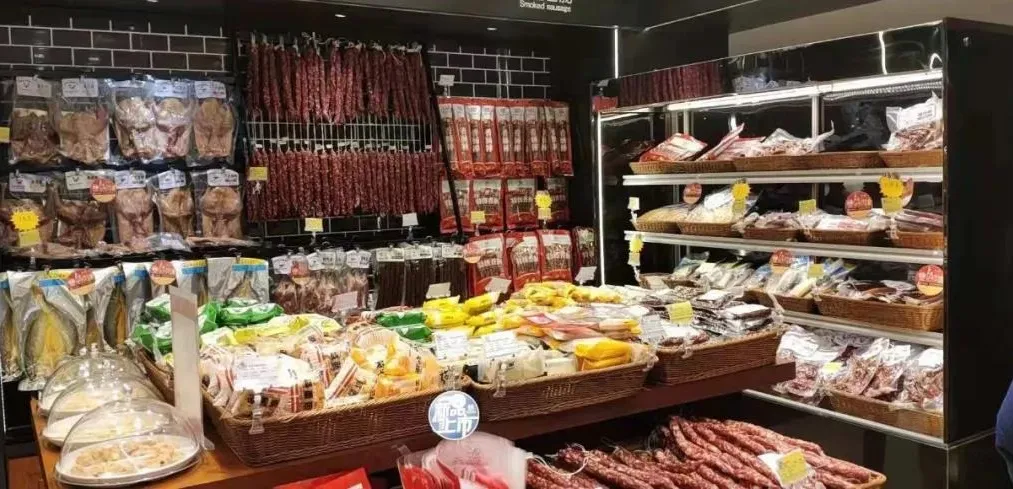
Lifeng’s dried meat products are deeply loved by old Shanghainese and are always indispensable in every household during festivals. Lifeng’s Cantonese-style sausages are used to make clay pot rice or pickled pork with preserved vegetables, and they taste very good.
Qiaojiazha Pastry
Qiaojiazha is one of the oldest local brands in Shanghai. Its lard fruit sponge cake, lard eight-treasure rice pudding, leishayuan, tangyuan, rice dumplings, cat ears, shrimp mooncakes, and three-fresh bizituan are known as the “Top Ten Famous Dishes of Qiaojiazha”.
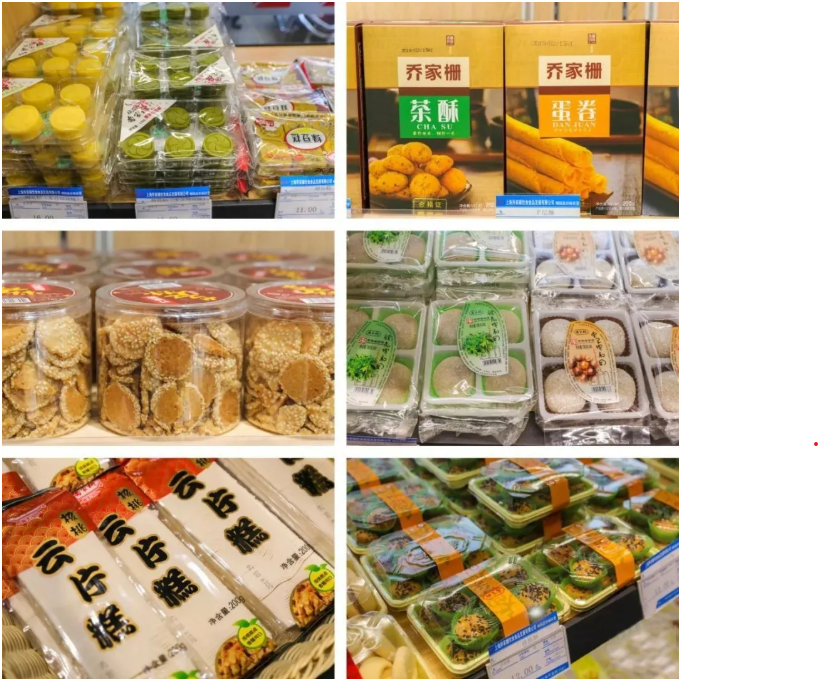
As an intangible cultural heritage of Shanghai, the “Qiaojiazha pastry making technique” has been passed down from generation to generation.
Yixinzhai Muslim Restaurant
In addition to the century-old Hong Changxing and Yang Tongxing restaurants, there is also the Yixinzhai Halal Restaurant on Pingliang Road in Yangpu District in Shanghai.

Among the halal dishes of Yixinzhai, the most distinctive ones are the beef products and cold dishes. Especially Yixinzhai’s beef fried buns are a must-try. You have to queue up to buy them.
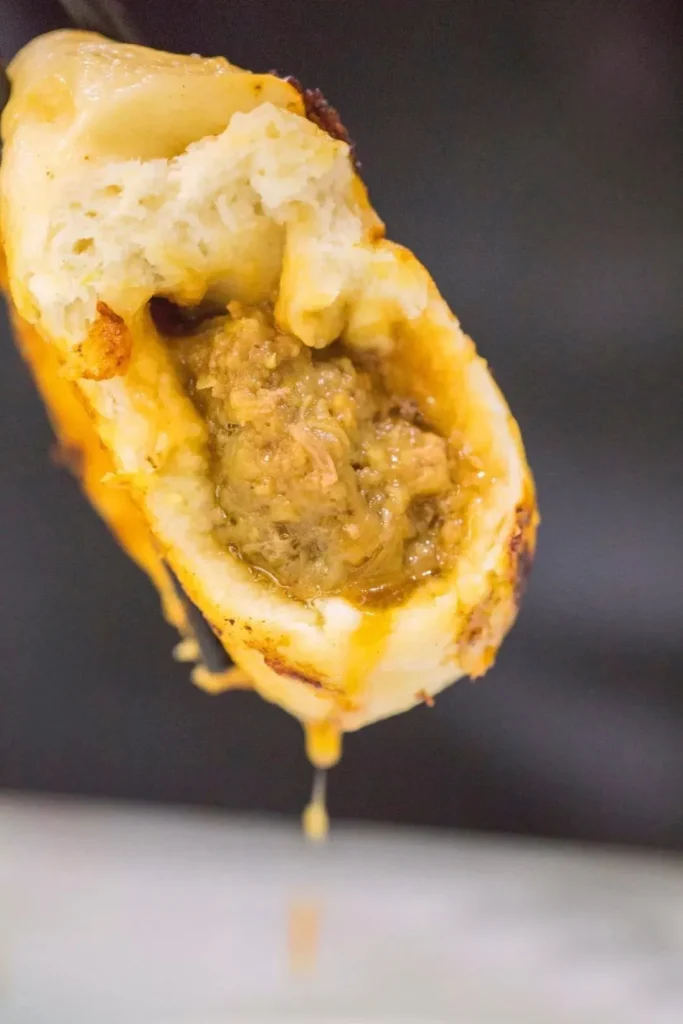
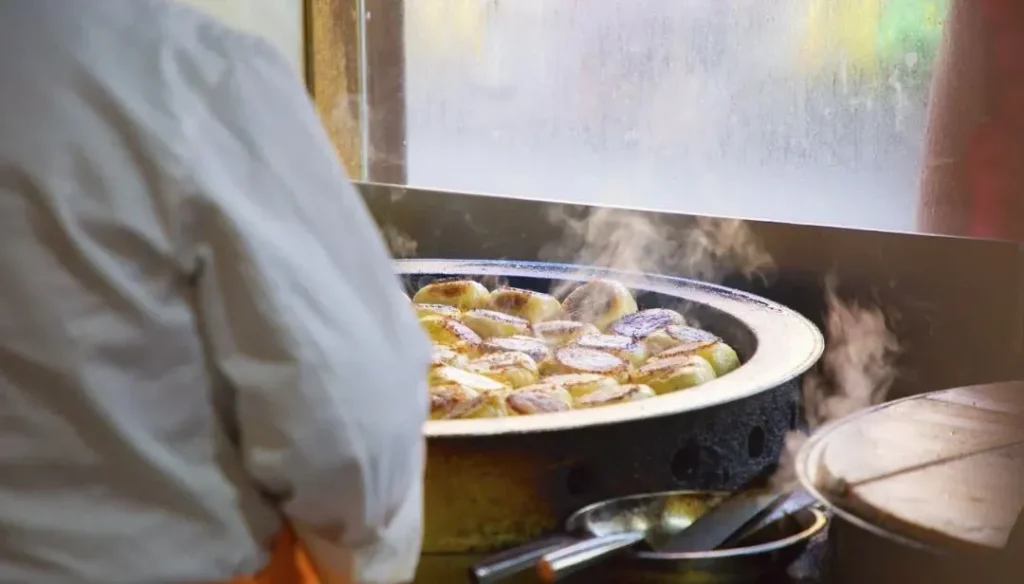
In addition to beef fried buns, there are also inexpensive and high-quality halal snacks such as beef dumplings and beef steamed buns, as well as dozens of affordable and delicious noodles and rice dishes.
Baoshan catfish
Shanghainese people love braised fish as much as they love braised pork. Braised catfish is a well-known Shanghai dish, and Baoshan catfish is the top braised catfish technique.
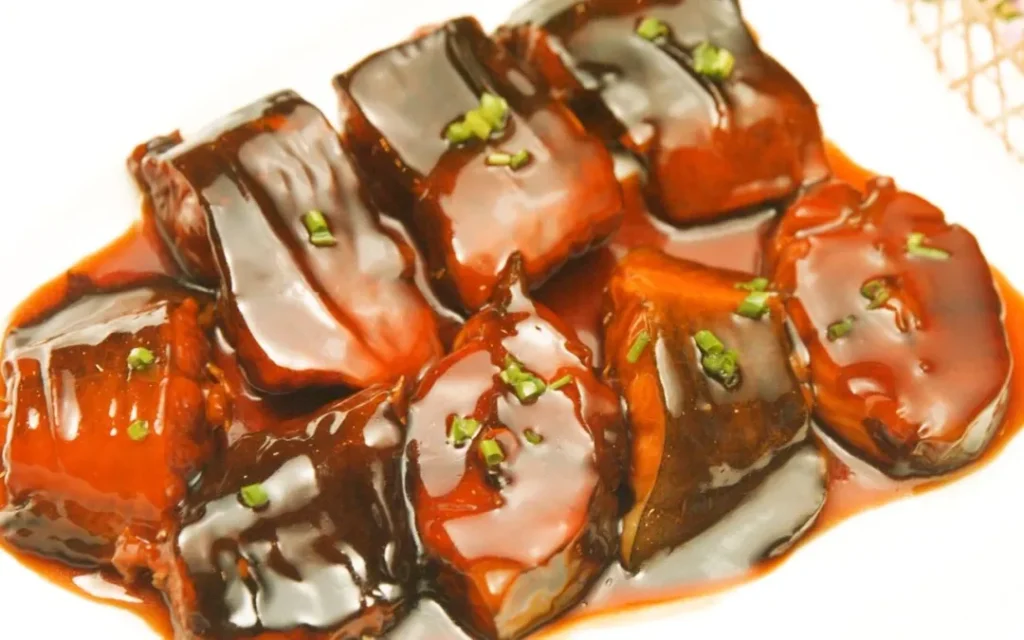
The cooking technique of Baoshan catfish is inherited from the famous Hexing Restaurant in Wusong Old Street. Wild catfish from the Yangtze River estuary are used. It needs to be cooked for more than half an hour, and “two stews and three braises” to make the fish meat crispy, soft and glutinous.
Nanxiang Steamed Buns
Nanxiang is the birthplace of Shanghai steamed buns, which are known for their thin skin, large fillings, rich juice and beautiful shape. Nanxiang steamed buns have always been praised highly, and no matter the skin, fillings, soup or cooking time, they are all extremely sophisticated and exquisite in every step.
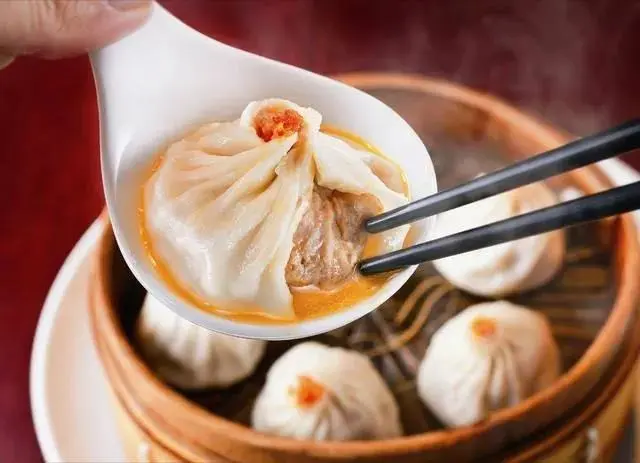
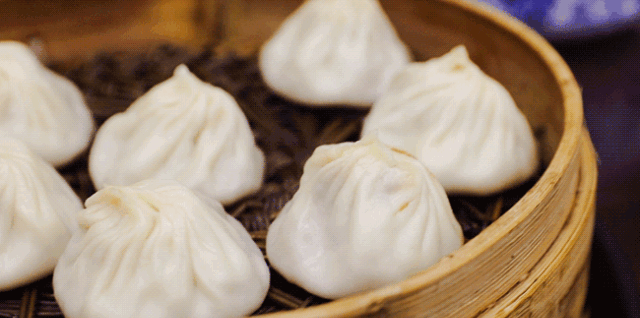
Nanxiang Xiaolongbao, with its purely hand-chopped stuffing, once occupied half of the market share of Xiaolongbao.
Guyi Garden Nanxiang Xiaolongbao
In addition to the City God Temple, Nanxiang’s Guyi Garden is also famous for its steamed buns.
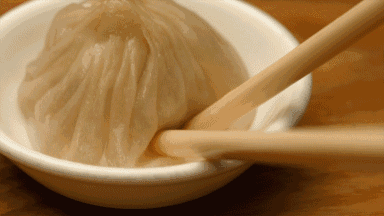
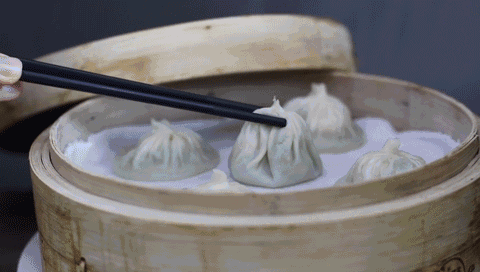
Each steamed bun in Guyiyuan Xiaolongbao is required to have more than 14 folds. When it comes out of the steamer, it is translucent, shaped like a water chestnut, and small and exquisite. When the dough is peeled off, the meat filling can be clearly seen, and it is best if the soup fills a whole dish.
Xujing Soup Fried
Some people say that Xujing Tangchao looks like Henan’s Hu La Tang. Although the taste is very different, the preparation method is really similar!
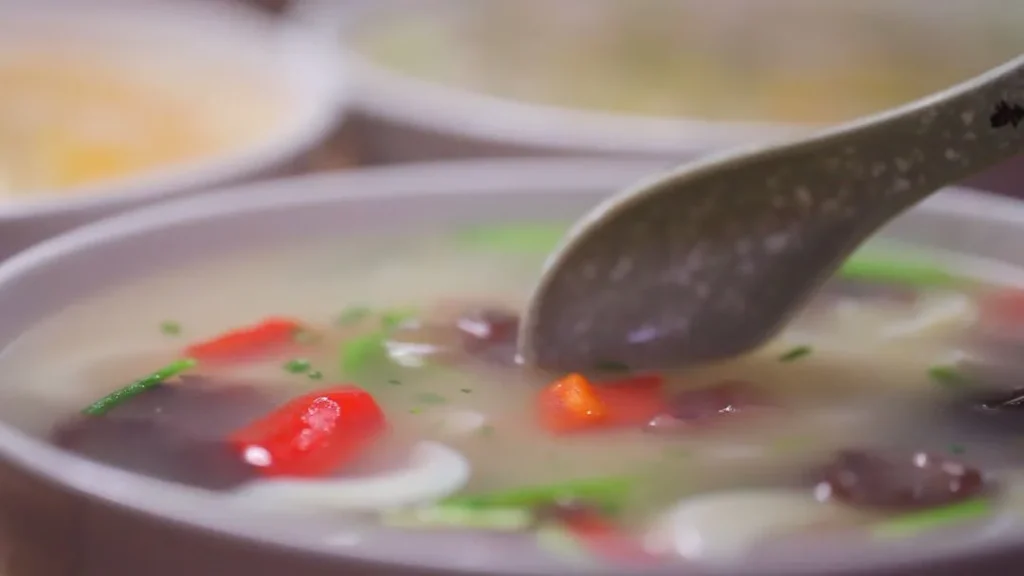
After boiling the old hen, old duck, ham, spare ribs, meat bones and other ingredients into a broth, add the ingredients into the broth, thicken and serve. A serving of Xujing stir-fry soup is ready.
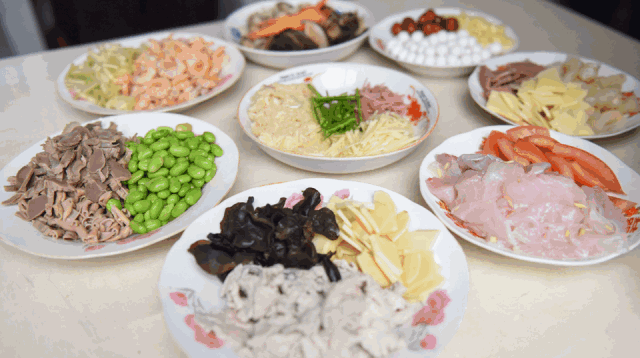
The Xujing stir-fry cooking technique originated in the Xujing Panlong Ancient Town. Stir-fried soup is an indispensable main dish at any local wedding or funeral.
Qibao Farmhouse Cake
Qibao’s farm cakes are quite famous in Shanghai. Farm cakes like square cakes, crabapple cakes, Chongyang cakes, plum blossom cakes, green rice balls, collapsed cakes, and steamed shepherd’s purse dumplings are all very representative.
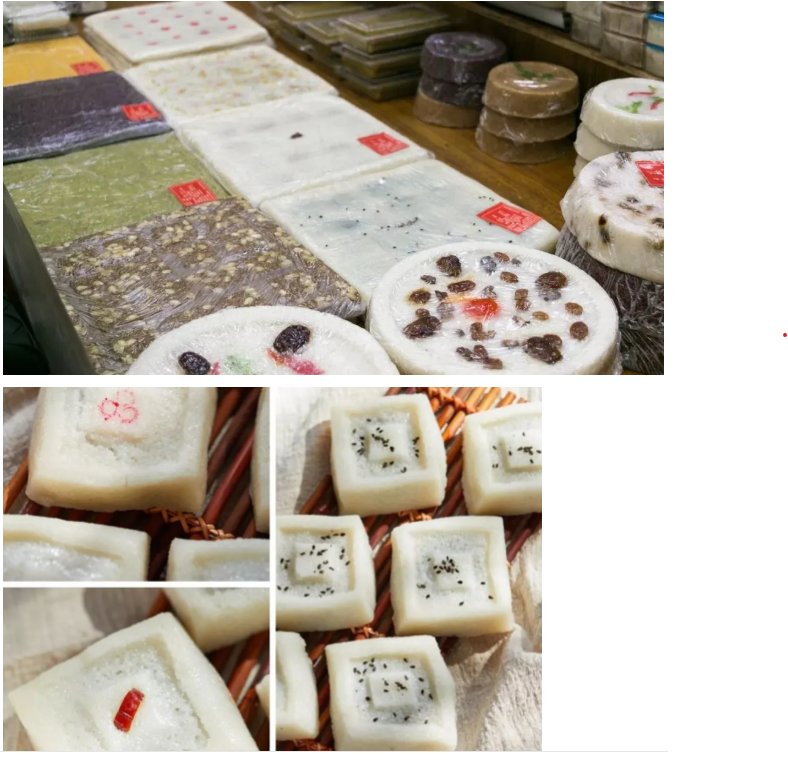
Local ingredients, carefully matched, and handmade, the taste is soft, glutinous, and sweet. It is a good choice to give it as a gift or to reward yourself.
Fengjing Dingti
Fengjing Dingti, located in the southwest corner of Shanghai, has been famous for hundreds of years and has won the Panama International Gold Award together with Maotai.
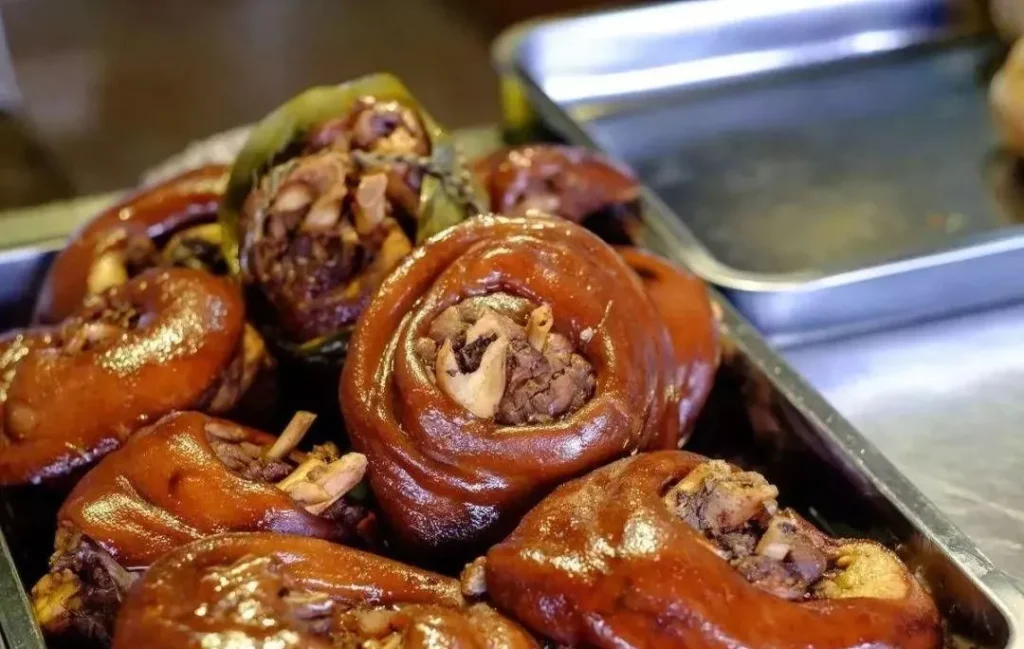
It is soft and delicious when eaten cold, and crispy but not mushy, and oily but not greasy when eaten hot. Many people travel thousands of miles to Fengjing Ancient Town just for a taste of the authentic Fengjing Dingti.
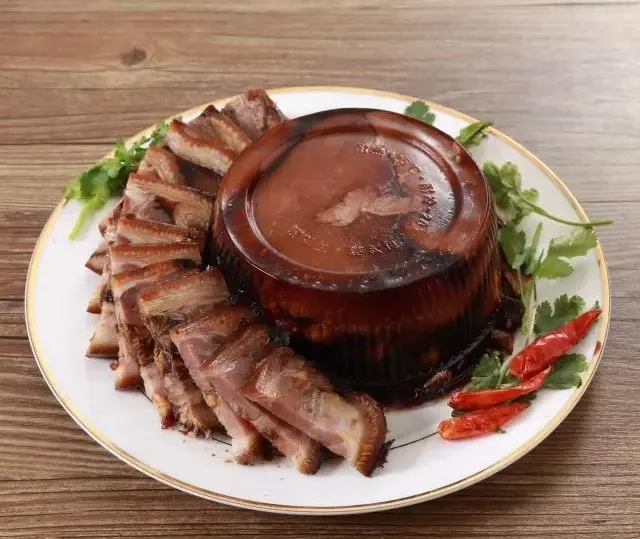
Fengjing Dingti is made from Fengjing pigs, with Fengjing rice wine and Fengjing soy sauce to make the most authentic Fengjing Dingti. The shiny color alone can increase your appetite.
Luxiang White Dragon Cake
Luxiang is best known for its fruit garden, but its Bailong cake is also very famous.
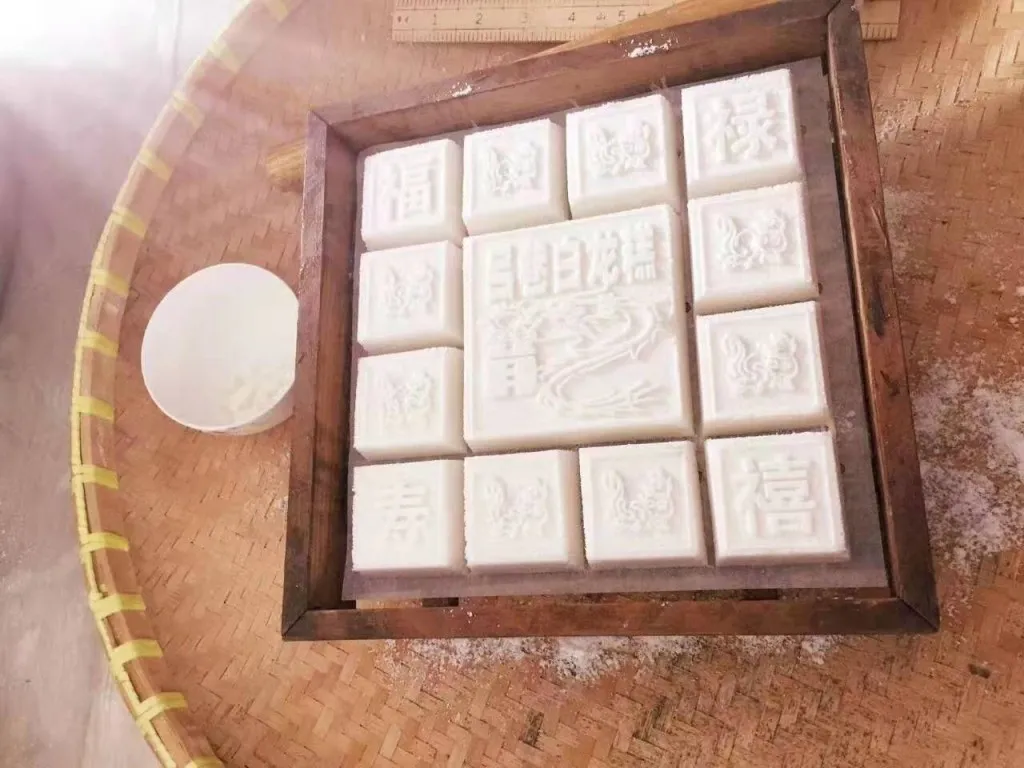
In the rural areas of Jinshan, there is an old custom that the 23rd day of the twelfth lunar month before the Lunar New Year is called “Little New Year”. At this time, White Dragon Cake is made. Farmers who make the cakes will use the first steamed cakes to worship the Kitchen God, which has the meaning of “higher year by year”.
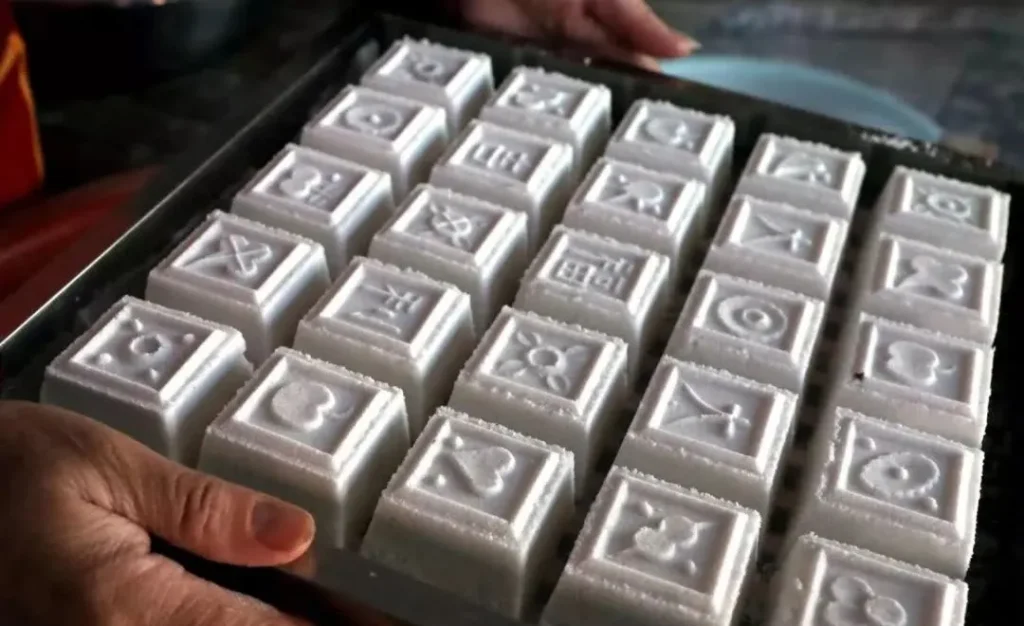
Bailong cake is delicate and smooth, fragrant, glutinous and refreshing, yet sweet but not greasy.
Jinshan yarrow
For those who have never eaten Jinshan Yancai, their first reaction is mostly that it is a vegetarian dish, but in fact, Jinshan Yancai is a general term for a table of dishes, with both meat and vegetables.
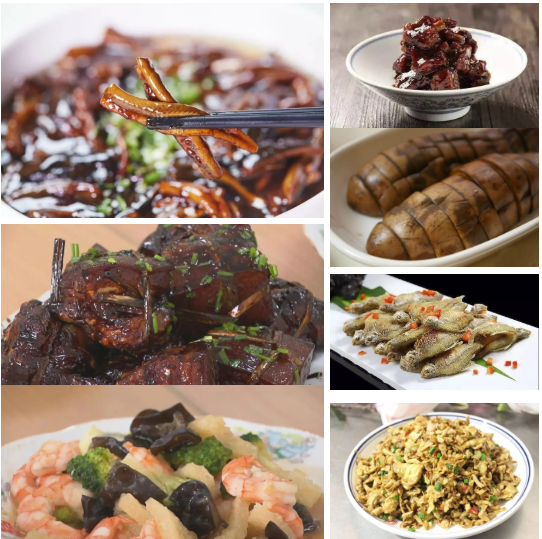
The core dishes of Jinshan Yancai include fried eel shreds, braised pork with brown sauce, sweet and sour spareribs, pickled green eggplant, stir-fried three delicacies, deep-fried minnow, and fried eggs with celery. Jinshan Yancai has completely preserved the special cooking techniques of Jinshan Zhangyan local dishes and is known as a living specimen in the history of the development of Jiangnan cuisine in China.
Wen Wantai Pickles
Pickle making has a long history in my country, and Sanlin is not the only famous one. Wen Wantai pickles in Zhangyan, Jinshan, Shanghai are also a well-known brand of pickles. They have even been listed as a district-level intangible cultural heritage project. They are usually used with porridge, which is simply a perfect match.

The raw materials are common seasonal vegetables, such as radish, melon, lettuce, garlic sprouts, lotus root, etc., but once they are put into the jar of sauce, they have hundreds of colors and thousands of flavors.
Yexie Soft Cake
Yexie Soft Cake is a traditional Shanghai pastry with a history of more than 400 years and is listed as Shanghai’s intangible cultural heritage.
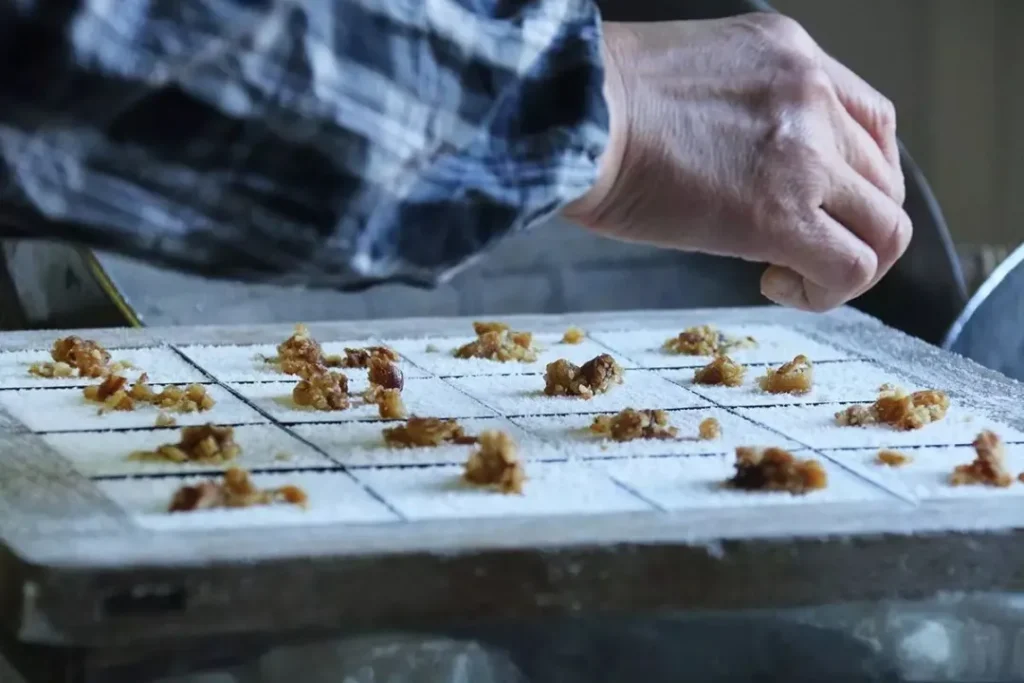
Yexie soft cakes come in three varieties: square cakes, vegetarian cakes, and osmanthus white sugar cakes. They are made entirely by hand using high-quality white sugar and glutinous rice as the main ingredients. They taste soft and sweet, not greasy, and fragrant, glutinous, and smooth.
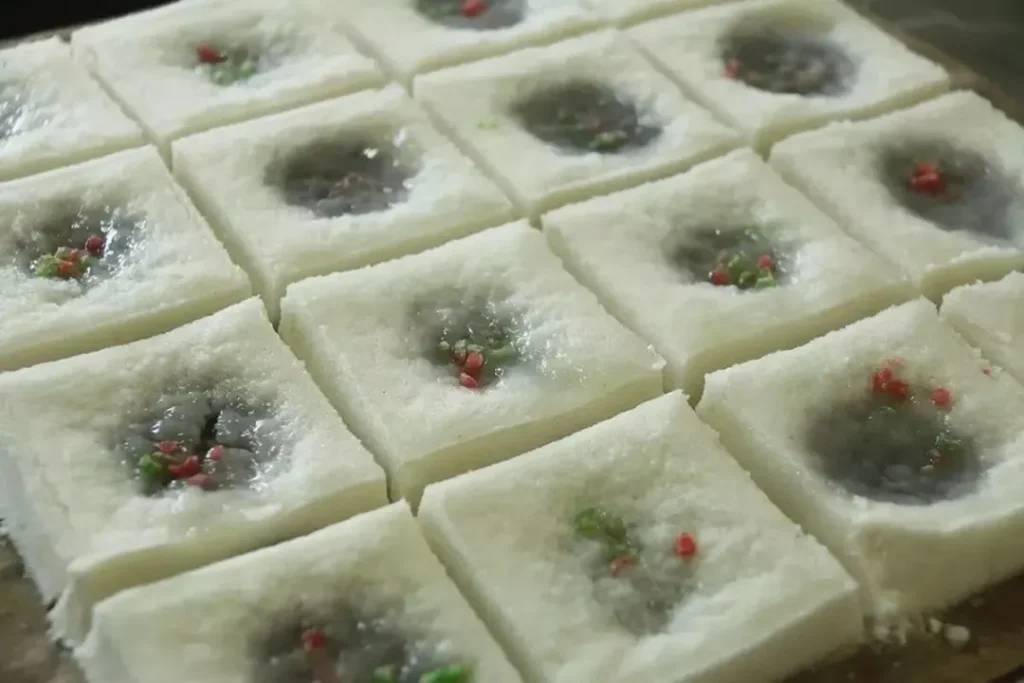
It is said that the secret to the delicious Yexie soft cake lies in the ratio of polished rice and glutinous rice, so a good Yexie soft cake is easier to chew than rice cake and fuller than glutinous rice balls.
Mutton Soju
Mutton and liquor is a traditional food culture that has gradually formed over hundreds of years in the Zhuangxing area. It has the reputation of “Watching the Sheep Festival in Zhuangxing for a Thousand Years”. The Zhuangxing Sheep Festival is held in July and August every year.
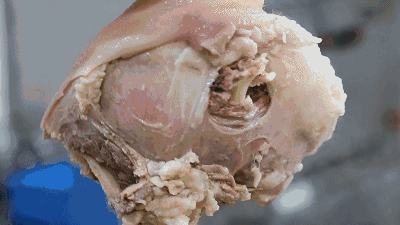
Eating mutton and drinking a glass of liquor in the dog days of summer while sweating all over is so refreshing.
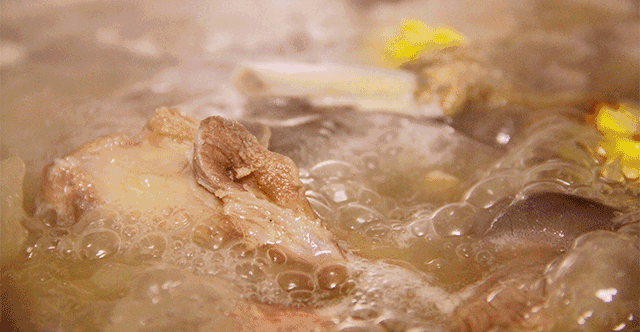
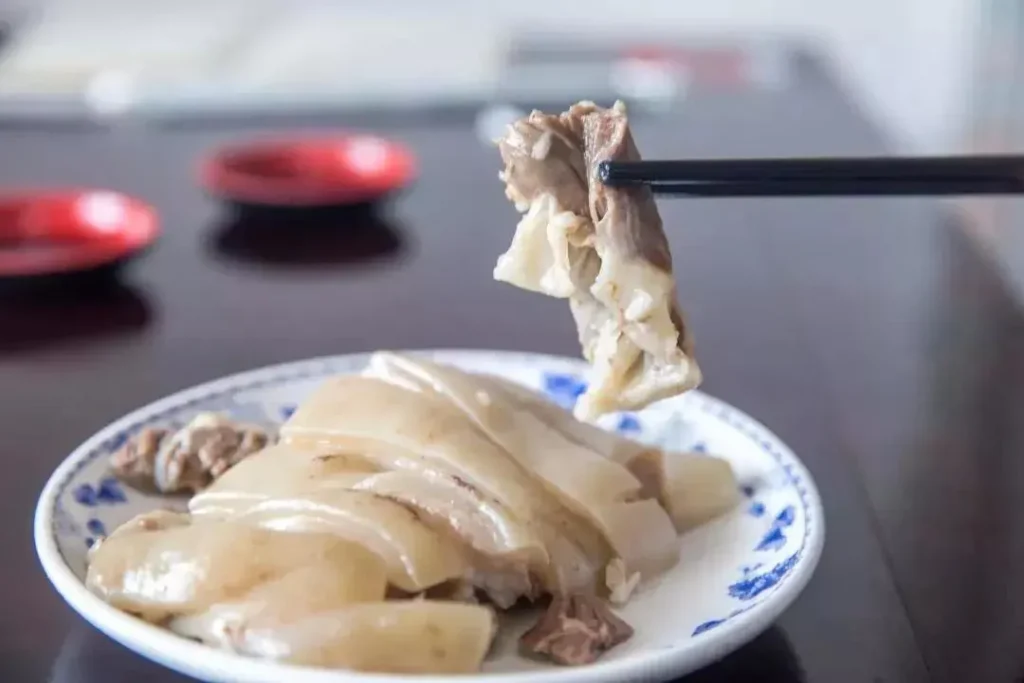
There are many ways to cook mutton in Zhuanghang, including mutton head soup, boiled mutton, braised mutton, stir-fried mutton with green onions, stewed mutton, four mutton treasures, hand-shredded mutton, etc. The most authentic way is to boil it. Most diners drink it with liquor (white wine or yellow wine).
Chongming Old Liquor
Chongming Laobaijiu, also known as Chongming Rice Wine, has a brewing history of more than 700 years.
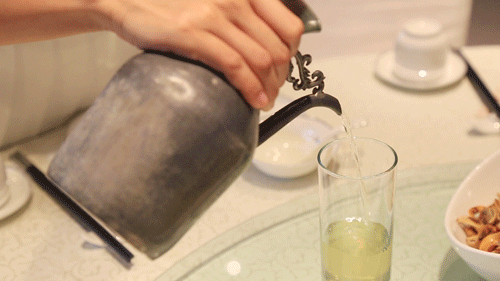

It is no exaggeration to say that in Chongming, almost everyone drinks old liquor. It is light in color and looks like rice washing water. The sweet aroma of the old liquor with a concentration of more than ten degrees is mixed with a slightly sour refreshing taste, which goes straight down the intestines. The mellow aroma brings a strong aftertaste, which is mellow and sweet with a long aftertaste.
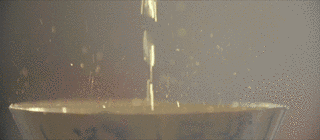
No wonder some people always miss Chongming Laobaijiu. The reputation of “famous within 300 miles of Jiangbei and the best taste in Jiangnan” is not for nothing.
Chongming Cake
If you go to Chongming, you must try Chongming Cake. Chongming Cake symbolizes reunion, sweetness and happiness. For Chongming people, Chongming Cake represents the taste of their hometown.
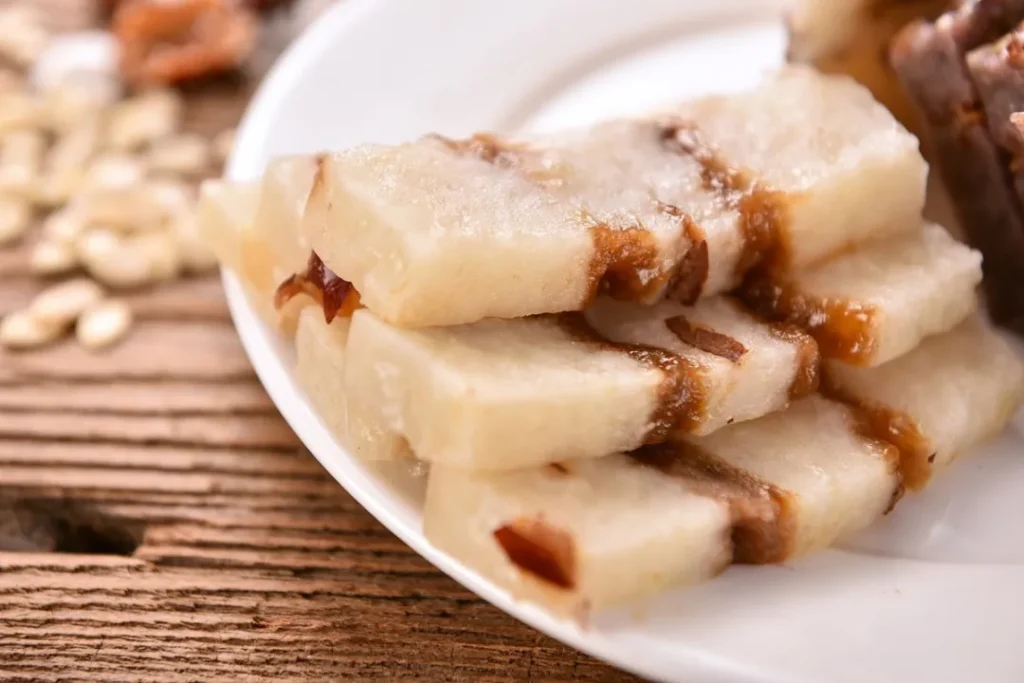
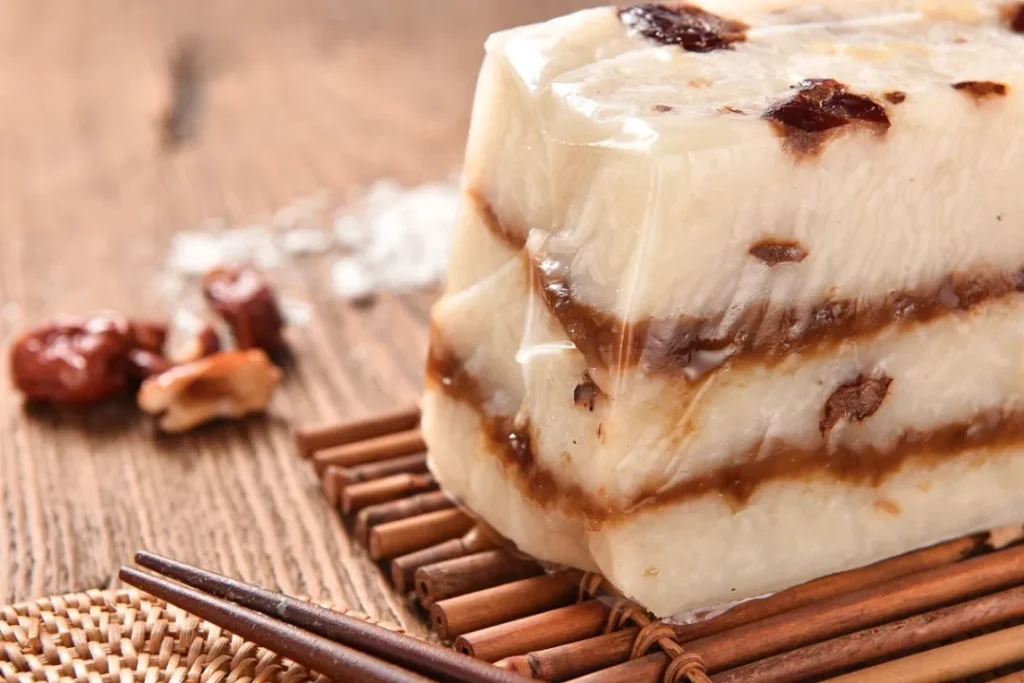
The authentic Chongming cake is made from the finest glutinous rice and white rice in a certain proportion. It has a glutinous but not greasy, soft, sweet and delicious taste. It tastes best when cut into pieces, steamed and eaten while hot.

